Discover the amazing wildlife of Australia; this Australian animals list has pictures and facts on Australia’s most famous animals (and many of its lesser-known species).
Click on the photos or follow the links to find further information on key species. Download the free question sheet and become an Australian animal expert!
Page Index
- Free Printable Worksheet For Use With This Page
- Introduction
- Marsupials
- Australian Animals List with Pictures & Facts
Free Australian Animals Worksheet
You can view and download a FREE Australian animals question sheet for this page here: Australian Animals Worksheet. (No sign-up is required; simply download the pdf file and get started.)
- More animal worksheets can be found on this page: Free Printable Worksheets.
- Join our animals & wildlife newsletter list and download a FREE Awesome Animals ebook!
List Of Australian Animals – Introduction
Australia is the world's sixth-largest country by area and is famous for its spectacular landscapes and diverse wildlife.
With habitats ranging from desert to coral reef, via tropical and temperate rainforests, rivers and grasslands, Australia is home to many of the world’s most recognisable animals, including kangaroos, koalas, emus, platypuses, wombats and goannas.
Australia is surrounded by the Indian and Pacific Oceans, and its isolated position means that its wildlife has evolved without outside interference.
Many Australian animals are ‘endemic’ to the country. This means that they are only found in Australia, and nowhere else on Earth.
Marsupials
Many of Australia’s best-known animals are marsupials. Although marsupials are also present in the Americas, around 70% of the world’s marsupial species are found on the Australian continent (which includes mainland Australia, Tasmania and New Guinea).
Marsupials are mammals whose young are born at an early stage of development. After being born, the tiny infant marsupial crawls into a special pouch in its mother’s body. Here it feeds on its mother’s milk and continues to develop in safety until ready to emerge.
Animals such as kangaroos, possums, koalas and bandicoots are marsupials. You’ll meet all of these – and more – in the list below!
Australian Animals List with Pictures & Facts
Scroll down to see all of the animals in alphabetical order, or use the index below to find a specific species:
Australian Magpie
- Scientific name: Gymnorhina tibicen
- Type of animal: Bird, member of the family Artamidae
- Conservation status: Least Concern
The Australian magpie is one of the most familiar Australian birds. This common species is found in habitats ranging from urban areas to forests, and is present across most of the country, only missing in some desert regions.
The Australian magpie has black and white plumage and orange-brown eyes. It is a similar size to the Eurasian magpie, but unlike that species is not a member of the crow family, Corvidae. Instead, it is a member of the family Artamidae, which also includes the butcherbirds.
The Australian magpie is famous for its warbling call.
Australian Sea Lion
- Scientific name: Neophoca cinerea
- Type of animal: Mammal, member of the eared seal family Otariidae.
- Conservation status: Endangered
The Australian sea lion is a member of a group of animals known as the pinnipeds, which contains the seals, sea lions and walrus. The Australian sea lion is the only pinniped endemic to (only found in) Australia. The species is present along the southern and southwestern coastlines of the country.
This aquatic mammal feeds mainly on fish and molluscs such as squid and cuttlefish. It is also known to eat penguins.
The Australian sea lion was once heavily hunted. Although it is now protected, the population has not fully recovered.
Today the species’ primary threats are commercial fishing (although not targeted by the fishermen, the Australian sea lion often becomes entangled in gillnets) and habitat degradation.
- You can find out more about the Australian sea lion here: Australian Sea Lion Facts
Bandicoot
- Number of species: around 20
- Type of animal: Mammal, member of the marsupial order Peramelemorphia (bandicoots and bilbies)
Bandicoots are a group of around 20 omnivorous, ground-dwelling marsupials found in Australia and New Guinea. They are rat-like animals with hunched backs, thin tapered noses and relatively long legs. Most are rabbit-sized. The largest bandicoot found in Australia is the northern brown bandicoot.
Bandicoots are found throughout Australia. They live in a variety of habitats, ranging from gardens to rainforests.
Bandicoots forage using their sensitive noses to detect food such as insects and earthworms buried in the ground, which they excavate with their forepaws. The holes that they leave in the ground are known as ‘snout-pokes’.
- You can find out more about bandicoots here: Bandicoot Facts
Barramundi
- Scientific name: Lates calcarifer
- Type of animal: Fish, member of the family Latidae
- Conservation status: Unassessed
The barramundi is a fish found on the tropical coastline of northern Australia. It has large silver scales and a humped back, and grows up to around 1.6 m (5.3 ft.) in length.
The barramundi is found in both freshwater and marine habitats. It lives in rivers and travels downriver to breed in estuaries and coastal wetlands. Some populations spend all of their lives in marine environments.
Barramundi begin their lives as males, but most become female after one or more spawning seasons.
Bilby (Greater)
- Scientific name: Macrotis lagotis
- Type of animal: Mammal, member of the marsupial order Peramelemorphia (bandicoots and bilbies)
- Conservation status: Vulnerable
Since the lesser bilby became extinct in the 1950’s, the greater bilby is the only surviving bilby. (For this reason the greater bilby is often known simply as the ‘bilby’.)
Once present throughout southern Australia, the greater bilby is now only found in desert regions in central Australia.
Unlike other bandicoots, the bilby is a burrowing animal. It is equipped with powerful forelimbs and robust claws. The female’s pouch is rear-opening to prevent earth from entering while burrowing. The species’ long ears give it the alternative name of ‘rabbit-eared bandicoot’.
The bilby uses its long tongue to forage for seeds, insects and bulbs.
- You can find out more about bilbies here: Bilby Facts
Black Swan
- Scientific name: Cygnus atratus
- Type of animal: Bird, family Anatidae (the duck, geese and swan family)
- Conservation status: Least Concern
The black swan is a large waterbird found in wetlands throughout Australia. The species is an emblem of Western Australia, and appears on the state’s flag and coat of arms.
This distinctive Australian bird has black plumage and a bright red bill with a pale tip. When it is flying or has its wings raised in an aggressive display its white flight feathers can be seen.
The black swan is mainly herbivorous, feeding on aquatic plants and algae. It uses its long neck to reach food, ‘up-ending’ with its head and shoulders submerged when necessary.
Bowerbirds
- Type of animal: Birds, family Ptilonorhynchidae
- Number of species: 20
- Number of species found in Australia: 20
Bowerbirds are a family of birds found in Australia and New Guinea. Of the 20 species of bowerbird, 10 are found in Australia. Most live in rainforests and other forest habitats.
Bowerbirds are famous for their courtship ritual. This involves the male building an elaborate structure known as a bower on the forest floor. The bower is made out of sticks, and decorated with flowers, vegetation, and brightly-coloured objects, including man-made items.
Females usually mate with the male who has built the most impressive bower. The bower is built purely for courtship, and is not used as a nest.
One of the best-known Australian bowerbirds is the satin bowerbird, a species found in the coastal forests of eastern Australia. The male has glossy blue-black plumage, the female is olive-brown. Both have bright blue eyes.
Brolga
- Scientific name: Antigone rubicunda
- Type of animal: Bird, member of the family Gruidae (the crane family)
- Conservation status: Least Concern
The brolga is a member of the crane family found in Australia and New Guinea. It was formerly known as the ‘native companion’. In Australia, it is found in wetlands and wet grasslands in the north, east and south-east of the country. The species is also found in New Guinea.
Like all cranes, the brolga is a large, tall bird with long, thin legs and a long neck. Its plumage is grey and there is a red patch on the back of the head.
Although the species’ conservation status is ‘Least Concern’, it is thought that its numbers are declining, mainly as a result of habitat loss.
Budgerigar
- Scientific name: Melopsittacus undulatus
- Type of animal: Bird, member of the order Psittaciformes (Parrots)
- Conservation status: Least Concern
The budgerigar is a small member of the true parrot superfamily, Psittacoidea. It is found in a variety of habitats, including deserts, farmland and urban gardens, and is present throughout much of Australia. The species has also been introduced to the United States.
The budgie is nomadic, moving from area to area in search of water and the seeds on which it feeds.
The budgie is the world’s third most popular pet. In the wild its plumage is predominantly yellow and green, but captive birds have been selectively bred in a number of colour variations, including blue, grey and all yellow.
Cairns Birdwing Butterfly
- Scientific name: Ornithoptera euphorion
- Type of animal: Insect, member of the birdwing genus Trogonoptera, part of the swallowtail family Papilionidae
- Conservation status: Least Concern
With a wingspan of up to 15 cm (5.9 in), the Cairns birdwing is one of the largest butterflies found in Australia. The species is endemic to Australia. It lives in the tropical rainforests of northeast Queensland.
Male Cairns birdwing butterflies are smaller than the females, but considerably more brightly-coloured. Their wings are a striking mix of black, yellow and green, while those of the females are mainly black with yellow patterning.
The species takes its name from Cairns, a coastal city in Queensland which is at the centre of the insect’s range.
Camel (Feral)
- Genus: Camelus
- Type of animal: Mammal, member of the order Artiodactyla (the even-toed ungulates)
- Conservation status: Domestic
There are around 300,000 feral camels living in Australia. Most are the dromedaries, but a number of feral Bactrian camels are also present. These large, hooved mammals were introduced during the 19th century, when they were used as transport.
The feral camel population of Australia was once as large as 600,000 individuals. Due to the damage this introduced species was causing to indigenous wildlife, measures were taken between 2009 and 2013 to reduce the population to its current size.
- You can find out more about the Bactrian camel here: Bactrian Camel Facts
Cane Toad
- Scientific name: Rhinella marina
- Type of animal: Amphibian, member of the true toad family Bufonidae.
- Conservation status: Least Concern
Many Australians would rather the cane toad was not on a list of Australian animals! The amphibian is an invasive species in Australia and has spread rapidly across the country since its introduction in the 1940s.
The insect-eating frog was brought to Australia from its native South America in order to reduce the population of crop-destroying grey-backed cane beetles.
Unfortunately, the cane toad bred rapidly and quickly spread across north-eastern Australia. The species’ introduction has been catastrophic to many native Australian species, who fall ill after eating the poisonous toad.
- You can find out more about cane toads here: Cane Toad Facts
Cassowary
- Genus: Casuarius
- Number of species: 3
- Number of species found in Australia: 1 (The southern cassowary)
- Type of animal: Bird, member of the family Casuariidae (which also includes the emu)
Cassowaries are large, flightless birds found in Australia and New Guinea. There are three species of cassowary; only the Southern Cassowary (scientific name Casuarius casuarius) is found in Australia (the species is also found in New Guinea).
The southern cassowary inhabits the rainforests of north-eastern Australia. It is the world’s second-heaviest bird, and the third-tallest.
The species is mainly black, with a blue neck and red collar. Its wattles (the fleshy growths that hang from the bird’s neck) are red. On the cassowary’s head is a bony, pointed, helmet-like structure known as a casque.
Cassowaries are fast runners. Their feet are equipped with dagger-like inner claws which may be used as weapons if the bird feels threatened.
The conservation status of the southern cassowary is Least Concern.
- You can find out more about cassowaries here: Cassowary Facts
Common Stingaree
- Scientific name: Trygonoptera testacea
- Type of animal: Fish, superorder Batoidea (rays)
- Conservation status: Least Concern
The common stingaree is a stingray found in the coastal waters of south-eastern Australia. It is the commonest ray found in this region.
Like all stingrays, the common stingaree has a round, flat body and long tail. It propels itself through the water with wave-like undulations of its wings. Its tail is equipped with either one or two venomous spines.
The species lives on sandbanks and mudflats, often lying partly buried on the sea bed. Although the fish will usually flee from bathers, if surprised it will lash out with its spines, and is capable of inflicting nasty injuries.
Crocodiles
- Type of animal: Reptile, member of the subfamily Crocodylinae (the true crocodiles)
- Number of species found in Australia: 2 (the saltwater crocodile and the freshwater crocodile)
- Conservation status (both species): Least Concern
There are two species of crocodile found in Australia: the freshwater crocodile and the larger saltwater crocodile.
The freshwater crocodile is a relatively small crocodile. It is endemic to Australia and is found in rivers and wetlands in the north of the country.
The saltwater crocodile is the largest reptile not only in Australia but also the world. In fact, this cold-blooded giant is the world’s largest land predator. It is found on and near the coast in northern Australia, as well as in New Guinea and several Southeast Asian countries.
Both Australian crocodiles have armour-plated skin and strong jaws full of sharp teeth. Crocodiles are ambush predators, which means that they lie in wait for their prey to draw near before attacking with explosive speed and power.
The freshwater crocodile will usually only attack a human if threatened. It is capable of delivering a powerful bite.
The saltwater crocodile, due to its size, power and ferocity, is an extremely dangerous animal and areas in which it is found are best avoided.
- You can find out more about the freshwater crocodile here: Freshwater Crocodile Facts
- You can find out more about the saltwater crocodile here: Saltwater Crocodile Facts
Dingo
- Scientific name: Canis lupus dingo
- Type of animal: Mammal, member of the dog family Canidae
- Conservation status: Vulnerable
The dingo is a large wild dog with sandy-gold fur. It lives in desert, grassland and forest habitats.
Most zoologists consider the dingo to be a subspecies of grey wolf, giving it the scientific name Canis lupus dingo. Others consider the dingo to be a separate species in its own right, giving it the scientific name Canis dingo.
The dingo’s closest relative is the New Guinea singing dog, a wild dog found on New Guinea.
Dingoes live and hunt in packs. Using teamwork they are able to bring down animals as large as the red kangaroo.
- You can find out more about this species here: Dingo Facts
Dugong
- Scientific name: Dugong dugon
- Type of animal: Mammal, member of the order Sirenia
- Conservation status: Vulnerable
The dugong is a marine mammal which, together with the three species of manatee, is a member of the order Sirenia. It is a large, round-bodied animal. Its unique, broad, downwards-pointing snout is an adaptation for feeding on seagrass.
Dugongs can live for up to 70 years, and in the past have been hunted for meat and oil. Today the main threats to the species are entanglement in gillnets, hunting, and boat strikes.
- You can find out more about the dugong here: Dugong Facts
Eastern Brown Snake
- Scientific name: Pseudonaja textilis
- Type of animal: Reptile, member of the family Elapidae
- Conservation status: Least Concern
Both of the world’s two most venomous snakes – the eastern brown snake and the inland taipan – are found in Australia.
Although the venom of the eastern brown snake is less powerful than that of the inland taipan, the species is considered more dangerous, as it is found near human habitations and has an aggressive temperament. It is responsible for more fatalities per year in Australia than any other snake.
The eastern brown snake grows to lengths of up 2 m (7 ft.). It is a relatively thin snake that ranges in colour from pale to dark brown. It is found in a variety of habitats across eastern Australia.
Eastern Long-Necked Turtle
- Scientific name: Chelodina longicollis
- Type of animal: Reptile, member of the family Chelidae
- Conservation status: Least Concern
The eastern long-necked turtle is found in rivers and wetlands in south eastern Australia. It has a round, plate-sized carapace (shell) which is black or brown with black grooves. The species’ neck is over half of the length of its shell.
Eastern long-neck turtles are members of the suborder Pleurodira, one of two turtle suborders (the other being the Cryptodira). Members of this suborder withdraw their heads into their shells with a sideways, rather than a straight, motion.
Echidna (Short Beaked)
- Scientific name: Tachyglossus aculeatus
- Type of animal: Mammal, order Monotremata (the monotremes)
- Conservation status: Least Concern
Echidnas are members of a unique group of mammals known as monotremes. Unlike every other type of mammal the five species that make up the order Monotremata lay eggs rather than giving birth to live young. The monotremes comprise four species of echidna and the platypus.
The short-beaked echidna is the only echidna found in Australia. It is present throughout much of the country, and is also found in New Guinea.
The short-beaked echidna is a small to medium-sized animal, usually between 30 and 45 cm in length. Its most distinctive characteristic is its coat of hard spines. It is equipped with powerful forelimbs and clawed feet, and is capable of burrowing at high speeds.
Echidnas are also known as ‘spiny anteaters’, but – although their diet consists of ants and termites – they are not related to the anteaters of the Americas.
- You can find out more about echidnas here: Echidna Facts
Emu
- Scientific name: Dromaius novaehollandiae
- Type of animal: Bird, member of the family Casuariidae (which also includes the cassowaries).
- Conservation status: Least Concern
The emu is a large flightless bird endemic to Australia. With an average weight of 33 kg (73 lb), it is the world’s 5th largest bird, and the second-largest in Australia, after the southern cassowary.
Although second to the southern cassowary in weight, the emu can reach a height of 1.9 metres (6.2 ft.), making it Australia’s tallest bird.
The emu’s plumage is light brown, and its sparsely-feathered neck is pale blue.
The flightless emu evades potential predators using its acute eyesight and hearing, and if necessary its high speed: it is capable of running at up to 48 km/h (30 mph). If cornered it can defend itself with its sharp claws and powerful legs.
Fairy Penguin
- Scientific name: Eudyptula minor
- Type of animal: Bird, member of the penguin family Spheniscidae
- Conservation status: Least Concern
The little penguin, commonly known as the fairy penguin in Australia, is the smallest species of penguin, standing at around 33 cm (13 in) tall and weighing around 1.5 kg (3.3 lb).
This small seabird is found along the south coast of Australia, both on the mainland and on coastal islands. The species is also found in New Zealand.
The dark sections of the little penguin’s plumage are blue-grey in colour, giving the species the name ‘little blue penguin’ in New Zealand.
Like all penguins the little penguin is flightless, its wings having adapted into flippers that allow it to ‘fly’ through the water. The little penguin spends around 80% of its life at sea, where it forages for fish and squid.
- You can find out more about little penguins here: Little Penguin Facts
Flatback Sea Turtle
- Scientific name: Natator depressus
- Type of animal: Reptile, member of the family Cheloniidae
- Conservation status: Data Deficient
The flatback sea turtle is found in the coastal waters of northern Australia and New Guinea, but only nests on the islands and beaches of northern Australia.
This large marine reptile is the least migratory of the seven species of sea turtle. It can be distinguished from other sea turtles by its comparatively flat shell.
- You can find out more about the flatback sea turtle animal here: Flatback Sea Turtle Facts
Frill-Necked Lizard
- Scientific name: Chlamydosaurus kingii
- Type of animal: Reptile, member of the family Agamidae
- Conservation status: Least Concern
The frill-necked lizard is a large lizard found across northern Australia. The species is arboreal (tree-dwelling) and usually found in the canopy layer of forests and woodlands. Its average length is 85 cm (2.79 ft.).
The frill-necked lizard gets its name from the large ruff of brightly-coloured skin around its neck. The ruff is connected to the lizard’s jaw bone. When threatened, the lizard opens the ruff out like an umbrella. This impressive display is intended to startle a potential predator, giving the lizard a chance to escape.
- You can find-out more about this distinctive Australian reptile here: Frill-Necked Lizard Facts
Galah
- Scientific name: Eolophus roseicapilla
- Type of animal: Bird, member of the family Cacatuidae
- Conservation status: Least Concern
The galah is a highly-social parrot with a widespread distribution across Australia. It occupies a diverse range of habitats, including woodlands, shrublands, meadows and urban areas.
The species forms large, noisy flocks that forage on the ground, feeding on the seeds of grasses, herbs and crops.
A member of the cockatoo family Cacatuidae, the galah is easily identified by the vibrant pink-coloured feathers on its head, neck, and underparts, and by the paler pink crest that can either be held erect or laid back. The wings, back, and tail are grey.
Although males and females look very similar, they can be distinguished by the colour of their irises: red or mid-brown for females and dark brown for males.
Giant Burrowing Cockroach
- Scientific name: Macropanesthia rhinoceros
- Type of animal: Insect, member of the family Blaberidae.
- Conservation status: Unassessed
The giant burrowing cockroach is the heaviest cockroach in the world, weighing up to 35 g and reaching a length of up to 8 cm. It has a lifespan of up to 10 years.
The giant burrowing cockroach doesn’t have wings, and spends much of its life underground in burrows that can be up to 1m deep. The species emerges from its burrow at night to feed.
Unlike most insects, the giant burrowing cockroach gives birth to live young rather than laying eggs. The species is ovoviviparous, with the eggs hatching inside the mother’s body prior to being born.
Females give birth in underground chambers and care for their young for up to six months, at which point the young leave the chamber to fend for themselves.
The giant burrowing cockroach is mostly found in the tropical regions of Queensland, and prefers areas with sandy soil. Unlike other cockroaches, it is not considered a pest. The species plays an essential role in the ecosystem by consuming dead leaves and recycling matter.
Giant Clam
- Scientific name: Tridacna gigas
- Type of animal: Bivalve, member of the family Cardiidae.
- Conservation status: Vulnerable
Tridacna gigas, one of several species known as ‘giant clams’, is the world’s largest bivalve mollusc. The species reaches lengths of up to 1.5 m and can exceed 500 lbs in weight. It is found in the warm waters of the South Pacific and Indian Ocean.
The giant clam’s mantle is generally yellow or green with blue or purple spots. The clam’s stunning colours are a result of algae that live within the mollusc’s tissue.
The clam and its resident algae have a symbiotic relationship (a relationship between species that is mutually beneficial). The clam receives nutrients produced by the algae as a result of photosynthesis. In return, the algae receives carbon dioxide, phosphates, nitrates, and a place to live.
The giant clam’s ‘Vulnerable’ conservation status is a result of its having been over-harvested for food and the aquarium trade.
Goanna
- Type of animal: Reptile, lizards in the genus Varanus (the monitor lizards)
- Number of species found in Australia: 25
Goannas are lizards in the genus Varanus (a group known as the monitor lizards). There are 25 goanna species found in Australia, and a further 5 species found in Southeast Asia.
The perentie (Varanus giganteus), which grows up to 2.5 m (8 ft. 2 in) in length, is Australia’s largest lizard, and the fourth-largest lizard in the world. Australia’s smallest goanna is the short-tailed monitor.
Goannas are carnivores, equipped with sharp teeth and claws. Their diet consists of a variety of invertebrate and vertebrate species, including insects, spiders, snakes, birds, marsupials and rodents.
Goannas aren’t fussy eaters; in general the larger the goanna, the larger the prey animal it will consume. Goannas will also scavenge on carrion.
- You can find out more about goannas here: Goanna Facts
- You can find out more about the perentie here: Perentie Facts
Goliath Stick Insect
- Scientific name: Eurycnema goliath
- Type of animal: Insect, member of the family Phasmatidae.
- Conservation status: Least Concern
The Goliath stick insect is found along the Australian east coast and southern Queensland. Despite being one of the largest insects in Australia, its camouflage and stick-like body make it tricky to find.
Female Goliath stick insects are much larger than males, reaching up to 25 cm in length.
Like many stick insects, the goliath stick insect is capable of parthenogenesis, a form of reproduction that does not require mating.
Despite having wings, females are unable to fly due to the size of their bodies. The smaller, thinner males are capable of flight.
Great White Shark
- Scientific name: Carcharodon carcharias
- Type of animal: Fish, member of the mackerel shark order Lamniformes
- Conservation status: Vulnerable
One of the most feared of all ocean predators, the great white shark can grow to over 6 metres (19.7 ft.) in length. It is found in oceans all around the world, including those around Australia.
This big fish preys on a variety of animals, with juveniles more likely to target fish, and adults more likely to target marine mammals such as seals, dolphins and other cetaceans. The great white is also known to attack humans.
The great white shark uses a ‘sixth sense’ when hunting. Organs known as ampullae of Lorenzini in the shark’s head act as electroreceptors, allowing the shark to sense the electrical fields produced in the muscles of other sea animals.
- You can find out more about the great white shark here: Great White Shark Facts
Hercules Moth
- Scientific name: Coscinocera hercules
- Type of animal: Insect, member of the family Saturniidae.
- Conservation status: Unassessed
The Hercules moth is Australia’s largest moth and one of the three largest moths in the world. The species, which is found on New Guinea as well as in tropical Queensland, has a wingspan of up to 27 cm (10.63 in.). The surface area of this huge insect’s wings is the largest of any insect.
The Hercules moth has large, brown wings with transparent windows and white edges. The female’s wings are so large that it can often be mistaken for a bird. The male is smaller than the female and more vibrantly-coloured. Its wings have elongated tails.
In its imago stage (the winged, adult stage), the Hercules moth does not eat, and lives for only 2 to 8 days. Adult females emit pheromones which can be detected by males up to 3 km away. After mating, a female lays 80 to 100 eggs on the leaves of rainforest plants and dies shortly after.
Inland Taipan
- Scientific name: Oxyuranus microlepidotus
- Type of animal: Reptile, member of the family Elapidae
- Conservation status: Least Concern
The inland taipan is the world’s most venomous snake. The potency of its venom is a result of the species having evolved specifically as a hunter of mammals. Just one bite is thought to contain enough venom to kill 100 men.
Despite its formidable bite, the inland taipan is responsible for relatively few attacks on humans. Unlike the closely related coastal taipan (one of the world’s most dangerous snakes), the species has a placid nature and lives in uninhabited areas.
- You can find out more about this species here: Inland Taipan Facts
Kangaroo
- Type of animal: Mammal, marsupial
- Family: Macropodidae (the macropods)
- Conservation status: A number of kangaroo species are under threat, in particular the tree kangaroos, many of which are endangered.
- Number of species found in Australia: 4 species are commonly known as kangaroos; the family Macropodidae contains around 65 living species
No list of Australian animals would be complete without the kangaroo! There are over 30 million of these familiar marsupials living in Australia.
The family Macropodidae comprises the kangaroos, wallaroos and wallabies. It is mainly size that determines in which of these three groups an animal is placed; the largest species are known as kangaroos, the smallest as wallabies, and those in between are called wallaroos.
Four species are commonly known as kangaroos. They are: the red kangaroo (Macropus rufus); the eastern grey kangaroo (Macropus giganteus); the western grey kangaroo (Macropus fuliginosus); and the antilopine kangaroo (Macropus antilopinus). There are around 60 other species in the family Macropodidae.
The red kangaroo is not only the largest kangaroo, but also the largest living marsupial.
Kangaroos travel by hopping rather than by walking or running. This is a surprisingly efficient means of locomotion; kangaroos have special elasticated tendons which store and release energy as the kangaroo hops.
Kangaroos, like many of Australia’s most famous animals, are marsupials. Marsupials are ‘pouched mammals’. After being born their babies – known as ‘joeys’ – climb into special pouches in their mothers’ bodies. Here the joeys continue to grow for several more months before being able to jump around by themselves.
- You can find out more about kangaroos here: Kangaroo Facts
- You can find out more about the red kangaroo here: Red Kangaroo Facts
Koala
- Scientific name: Phascolarctos cinereus
- Type of animal: Mammal, marsupial. The only living member of the family Phascolarctidae.
- Conservation status: Vulnerable
The koala is one of the best-known of all Australian animals. This arboreal (tree-dwelling) marsupial is found mainly in eastern Australia.
The koala can be identified by its thick grey coat, prominent black nose and fluffy ears. It resembles a small bear, and because of this is sometimes known as the ‘koala bear’. However, the koala is not a bear; being a marsupial, it is not related to the true bears in the family Ursidae, which are placental mammals.
Koalas spend most of their lives (up to 20 hours per day) sleeping. Their diet consists mainly of eucalyptus leaves, which contain little in the way of energy.
Despite their cuddly appearance, male koalas can be surprisingly aggressive when competing for territory.
- You can find out more about the koala here: Koala Facts
Kookaburra
- Genus: Dacelo
- Type of animal: Birds, members of the kingfisher family Alcedinidae
If you’ve ever been in the Australian bush and heard someone laughing, then don’t worry, you weren’t being made fun of; it was probably just a kookaburra – these Australian birds have a call that sounds like human laughter.
Kookaburras are birds in the subfamily of kingfishers known as the tree kingfishers, or Halcyoninae. The laughing kookaburra, with its famous call, is one of four species of kookaburra.
Kookaburras can be recognized by their large, powerful bills and the flashes of blue in their wings. Despite being members of the kingfisher family, they rarely eat fish, instead targeting a variety of small mammals and reptiles.
- You can find out more about kookaburras here: Kookaburra Facts
Marsupial Mole
- Scientific name: Notoryctes caurinus; Notoryctes typhlops
- Type of animal: Mammal, member of the family Notoryctidae
- Conservation status: Least Concern
There are two species of marsupial mole: the northern marsupial mole (Notoryctes caurinus) and the southern marsupial mole (Notoryctes typhlops). Both inhabit the deserts of Western Australia.
These small, insectivorous (insect-eating) marsupials spend nearly all of their lives burrowing underground, rarely coming to the surface.
Marsupial moles have undergone numerous adaptations for this underground lifestyle, including short limbs and powerful claws for digging, and the pouch of the female being rear-facing so as not to fill up with sand. Both species are completely blind.
Despite being marsupials, marsupial moles are very similar in appearance to burrowing placental mammals such as the golden moles of Africa. This is an example of convergent evolution – the process by which unrelated species develop similar characteristics.
(Another example of convergent evolution is the winged flight of both birds and bats.)
Murray Cod
- Scientific name: Maccullochella peelii
- Type of animal: Ray-finned fish, member of the family Percichthyidae
- Conservation status: Critically Endangered
The Murray cod is the largest native Australian freshwater fish species. It inhabits the Murray-Darling basin, an area which covers much of south-eastern Australia.
The species has a dark green mottled upper body and a creamy-white underside. It can weigh over 100 kg and reach lengths of up to 1.8 m long. Its lifespan can exceed 50 years.
The Murray cod is known to be a voracious and aggressive predator, feeding on other fish, ducks, snakes, mice, frogs, and even freshwater turtles.
Today, this impressive fish is seriously threatened by commercial and recreational fishing, habitat destruction, water pollution, and invasive species.
Numbat
- Scientific name: Myrmecobius fasciatus
- Type of animal: Marsupial, the only member of the family Myrmecobiidae
- Conservation status: Endangered
The numbat is a small marsupial with an appearance somewhere between a cat and a rat. It has a pointed face, a long, bushy tail, and a series of distinctive white stripes running along its back.
Numbats use their pointed muzzles to forage in the dirt for termites, which they scoop up with their long tongues.
The numbat has a number of natural predators, but it was the introduction of the red fox by settlers that led to the species becoming endangered. Today, only around 800 of this once widespread animal are left in the wild.
- You can find out more about the numbat here: Numbat Facts
Platypus
- Scientific name: Ornithorhynchus anatinus
- Type of animal: Mammal, monotreme
- Conservation status: Near Threatened
The platypus is one of Australia’s best-known animals, and also one of the strangest. This distinctive mammal has the bill of a duck, the tail of a beaver, and the feet of an otter. It is also one of the few venomous mammals, with males being armed with a venomous spur on their feet.
When the remains of a platypus were first brought to London for examination, the experts thought that someone was playing a trick on them!
The platypus belongs to a small group of mammals known as monotremes, whose members lay eggs instead of giving birth to their young. There are only five living monotremes: the platypus, and four species of echidna.
The platypus spends much of its life foraging for food on the beds of streams and rivers. It has electroreceptors in its bill with which it can detect electrical fields produced by the muscles of its prey.
- You can find out more about the platypus here: Platypus Facts
Possum
- Type of animal: Marsupial
- Suborder: Phalangeriformes
Possums are small to medium-sized nocturnal marsupials, most of which are arboreal (tree-dwelling). There are around 70 species of possum in the suborder Phalangeriformes. The group includes the ‘gliders’; a group of possums that have evolved the ability to glide from tree to tree.
The Tasmanian pygmy possum (Cercartetus lepidus) is the world’s smallest possum, with a maximum nose to tail length of just 30 cm (12 in.).
The common brushtail possum is the largest possum found in Australia, and the world’s third-largest possum, after the two bear cuscuses (which are both found in Indonesia).
Queensland Lungfish / Barramunda
- Scientific name: Neoceratodus forsteri
- Type of animal: Lobe-finned fish, member of the family Ceratodontidae
- Conservation status: Unassessed
The Queensland lungfish is a freshwater fish endemic to south-eastern Queensland. It is native to the Mary and Burnett River systems and has been introduced to other Queensland rivers, including the Coomera, Condamine, Albert and Logan.
Unlike most other fishes, the Queensland lungfish is able to breathe air. It is one of six living lungfish species, and the only one found in Australia.
Whereas the other five species of lungfish have two lungs and are unable to breathe with their gills, the Queensland lungfish has a single lung, which it uses in addition to its gills.
The species can live for up to 100 years.
Quokka
- Scientific name: Setonix brachyurus
- Type of animal: Marsupial in the family Macropodidae
- Conservation status: Vulnerable
Around the size of a domestic cat, the quokka is an herbivorous marsupial that resembles a miniature kangaroo. It is a member of the same family, Macropodidae, as its kangaroo and wallaby cousins.
The quokka is found mainly on islands lying off the southwestern coast of Australia, with only a small population remaining on the mainland. The species suffered greatly as a result of the introduction of the red fox, and was once found across a much wider range.
- You can find out more about the quokka here: Quokka Facts
Quoll
- Type of animal: Marsupials in the genus Dasyurus
- Number of species found in Australia: 4
Quolls are small to mid-sized, nocturnal, carnivorous marsupials. There are six species of quoll, four of which–the western, eastern, northern and tiger quoll– are found in Australia. (The other two species–the bronze quoll and the New Guinean quoll–are found in New Guinea.)
Quolls have brown or black coats marked with distinctive pale spots. They prey on small mammals, reptiles and birds.
Both the eastern quoll and the northern quoll are Endangered, while the conservation status of the other two Australian species is Near Threatened.
Like many of Australia’s native animals, quolls suffered greatly with the introduction of non-native predators such as the red fox and domestic cat.
One of the main threats to quolls comes in the form of another non-native animal: the cane toad. Although not predatory, the cane toad is poisonous. Native Australian animals that prey on the amphibian are likely to become ill or die.
- You can find out more about the quoll here: Quoll Facts
Redback Spider
- Scientific name: Latrodectus hasselti
- Type of animal: Arachnid, member of the family Theridiidae
- Conservation status: Unassessed
The redback spider is one of Australia’s best-known, and most feared, spiders. The species’ notoriety is due to bite of the female, which is extremely painful and whose symptoms can last from several hours to several days. Although extremely uncomfortable, the redback spider’s bite is seldom fatal to humans.
With a body length of around 1 cm, female redback spiders are over twice the size of males.
The species is black with a contrasting red stripe running along the centre of the back of the abdomen. On the underside of the abdomen is a red ‘hourglass’ marking.
Redback spiders are widely distributed throughout Australia but are most often found in urban areas. Although their diet consists mainly of insects, they will also eat small birds, lizards, rodents, flies, crickets, and beetles.
You won’t find many daddy redback spiders; during reproduction, females practice cannibalism.
- You can find out more about the redback spider here: Redback Spider Facts
Red-Eyed Tree Frog
- Scientific name: Litoria chloris
- Type of animal: Amphibian, member of the family Hylidae (the tree frogs)
- Conservation status: Least Concern
The red-eyed tree frog of Australia is a different species to the South American amphibian of the same name. Both species are in the tree frog family Hylidae.
The Australian red-eyed tree frog is found in rainforests and other moist forest habitats in eastern Queensland and New South Wales. It spends most of its life in the forest canopy, only coming down to the ground to breed after periods of heavy rain.
This Australian amphibian is bright green with yellow undersides. Its eyes – as its name suggests – are orange-red. The species is not threatened in the wild, and is also kept as a pet.
Sugar Glider
- Scientific name: Petaurus breviceps
- Type of animal: Marsupial
- Conservation status: Least Concern
The sugar glider is a gliding possum found not only in Australia, but also on New Guinea and some Indonesian islands.
This small, nocturnal marsupial is equipped with flaps of skin between its arms and legs. These act as wings, allowing the sugar glider to glide from tree to tree.
The omnivorous sugar glider eats insects, leaves and eucalyptus sap. This opportunist hunter may also eat small reptiles and birds when the chance arises.
- You can find out more about sugar gliders here: Sugar Glider Facts
Sydney Funnel-Web Spider
- Scientific name: Atrax robustus
- Type of animal: Arachnid, member of the family Hexathelidae
- Conservation status: Unassessed
Found within a 100-km radius of Sydney, the Sydney funnel-web spider is known for its dangerous bite, which, if untreated, can be fatal. The species’ venom is one of the most toxic of any spider.
The Sydney funnel-web spider is shiny dark brown / black, and between 1 and 5 cm in body length.
The species builds web-lined burrows from which it emerges to ambush passing prey. Web ‘tripwires’ alert the spider to the presence of prey outside of the burrow.
The spider prefers moist areas with constant humidity. It builds its burrows under logs and rocks, and in ground debris.
The Sydney funnel-web spider feeds mainly on insects such as cockroaches, beetles, and various larvae. It will also occasionally prey on snails, frogs and other small vertebrates.
- You can find out more about the Sydney funnel-web spider here: Sydney Funnel-Web Spider Facts
Tasmanian Devil
- Scientific name: Sarcophilus harrisii
- Type of animal: Marsupial
- Conservation status: Endangered
The Tasmanian devil is a carnivorous marsupial today found only in Tasmania, but once also found on mainland Australia. Its extinction on the mainland may have been caused by the presence of dingoes introduced by Aboriginal Australians.
The species is known for its ferocity, particularly when feeding, when it makes a distinctive screeching sound. It is this ‘devilish’ sound that gives the species its name.
The Tasmanian devil has the strongest bite force in relation to body size of any carnivorous mammal.
Today, the Tasmanian devil’s very survival is threatened by the spread of a killer disease known as devil facial tumour disease (DFTD). This highly-contagious disease, which causes sores to break out around the animal’s face, has caused a huge decline in the species’ population.
- You can find out more about the Tasmanian devil here: Tasmanian Devil Facts
Thorny Devil
- Scientific name: Moloch horridus
- Type of animal: Reptile; lizard in the family Agamidae
- Conservation status: Least Concern
This fearsome-looking lizard is found in the dry inland regions of Australia. Despite its aggressive appearance, the thorny devil is only dangerous if you happen to be an ant (this little reptile eats several thousand ants every day).
The thorny devil has a number of adaptations for living in the desert, including grooves in its skin that channel moisture to its mouth, and a false head to confuse predators.
- You can find out more about this Australian reptile here: Thorny Devil Facts
Turtle Frog / Tortoise Frog
- Scientific name: Myobatrachus gouldii
- Type of animal: Amphibian, member of the family Myobatrachidae
- Conservation status: Least Concern
The turtle frog (also known as a tortoise frog) is a small frog found in the southwestern corner of Western Australia. It lives in semi-arid areas, and has powerful limbs for burrowing in the sandy soil. The species gets its name from its turtle-like appearance. It has a round, flat body and resembles a turtle without a shell.
The turtle frog is unusual among frogs because it skips the tadpole stage of its development, instead hatching from its egg as a small frog.
Ulysses Butterfly / Blue Emperor
- Scientific name: Papilio ulysses
- Type of animal: Insect, member of the family Papilionidae
- Conservation status: Unassessed
Ulysses butterflies inhabit the tropical rainforests of north-eastern Australia, New Guinea, the Moluccas, Bismarck Archipelago and the Solomon Islands. They are also seen in suburban gardens in Queensland.
The wingspan of the Ulysses butterfly is around 10 cm. Males have vibrant iridescent blue colour wings with black edges. The blue colouration of the female’s wings is duller. The underside of the wings of both sexes is dark-brown, which provides camouflage when the insect is at rest.
Both males and females have the characteristic elongated tail streamers of butterflies in the swallowtail family, Papilionidae.
This striking butterfly species feeds on nectar, in particular that from flowers of the species Lantana camara.
Males are strongly attracted to the colour blue and will approach man-made objects of this colour.
Wallaby
- Type of animal: Mammal, marsupial
- Family: Macropodidae
Wallabies, like kangaroos, are members of the family Macropodidae. Wallabies are the smallest members of the family, with the smallest species–the dwarf wallaby–reaching just 46 cm (18 in) in total length.
Wallabies are found not just in Australia, but also on New Guinea. These herbivorous marsupials are found in a variety of habitats, including forests and rocky terrain. Rock wallabies have specially adapted, rough-soled feet for gripping onto rocks.
White-Lipped Tree Frog / Giant Tree Frog
- Scientific name: Litoria infrafrenata
- Type of animal: Amphibian, member of the family Hylidae
- Conservation status: Least Concern
The white-lipped tree frog is the world’s largest tree frog species, reaching a maximum length of 14 cm (5.5 in.). Bright green in colour, the species has a distinctive white stripe running along its lower lip and extending to above each shoulder.
The species is not endemic to Australia, and is also present on New Guinea and nearby islands. It lives in a variety of habitats, including rainforests and urban areas. In Australia it is found along the coastal areas of the Cape York Peninsula and the tropics of north-eastern Queensland.
During spring and summer males gather at breeding sites – typically bodies of still water – and emit a loud mating call, which sounds like a dog barking.
- You can find out more about the white-lipped tree frog here: White-Lipped Tree Frog Facts
Wombat
- Type of animal: Marsupials, family Vombatidae
- Number of species found in Australia: 3
Wombats are dog-sized burrowing animals that are only found in Australia. There are three species of wombat: the common wombat (Vombatus ursinus), northern hairy-nosed wombat (Lasiorhinus krefftii), and southern hairy-nosed wombat (Lasiorhinus latifrons). They are the only members of the family Vombatidae.
Wombats build large burrow systems, digging through the soil with their teeth and their strong claws. They have backwards-facing pouches to prevent dirt from entering while they are digging.
Wombats are mostly nocturnal, but are occasionally active during the day in the winter or on cool, overcast days.
The northern hairy-nosed wombat is Critically Endangered. With only around 80 mature individuals left in the wild, it is one of the world’s rarest mammals.
- You can find out more about wombats here: Wombat Facts
Yabby (Common)
- Scientific name: Cherax destructor
- Type of animal: Crustacean in the family Parastacidae
- Conservation status: Vulnerable
The final species in this Australian animals list is the common yabby (Cherax destructor). The yabby is a crayfish – a freshwater crustacean which resembles a small lobster. It is found in swamps, streams, lakes and rivers throughout much of east Australia.
The yabby has also been introduced to Western Australia, where it is an invasive species, and a potential threat to other native crayfish.
The yabby feeds on algae, plant material and animal remains. It is rated as Vulnerable by the IUCN.
Australian Animals List Conclusion
We hope that you have enjoyed reading this list of Australian animals. This is just a tiny section of the many different species found in Australia.
You can find out more about Australia at Wikipedia here. See the Wikipedia page on marsupials here.
Have we missed anyone? Let us know if your favourite Australian animals aren't on this list and we'll try to include them!
- Learn more about Australia's incredible birds here: List of Australian Birds.
- Discover more amazing animals here: Animals: The Ultimate Guide.



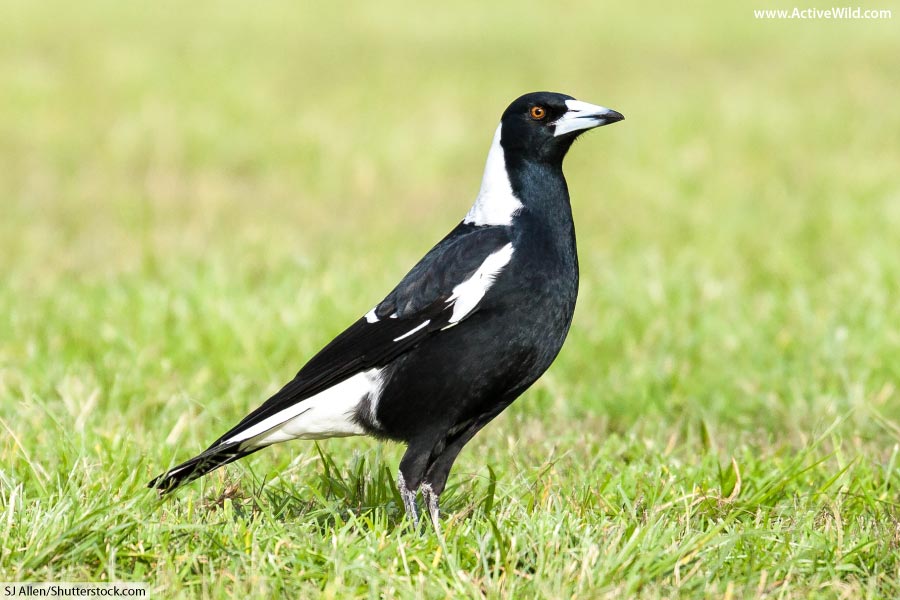
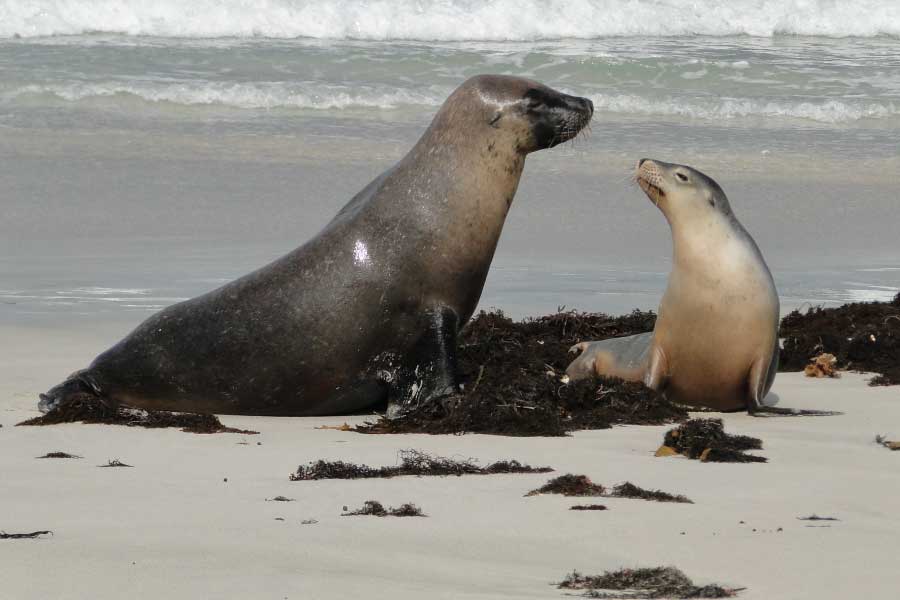
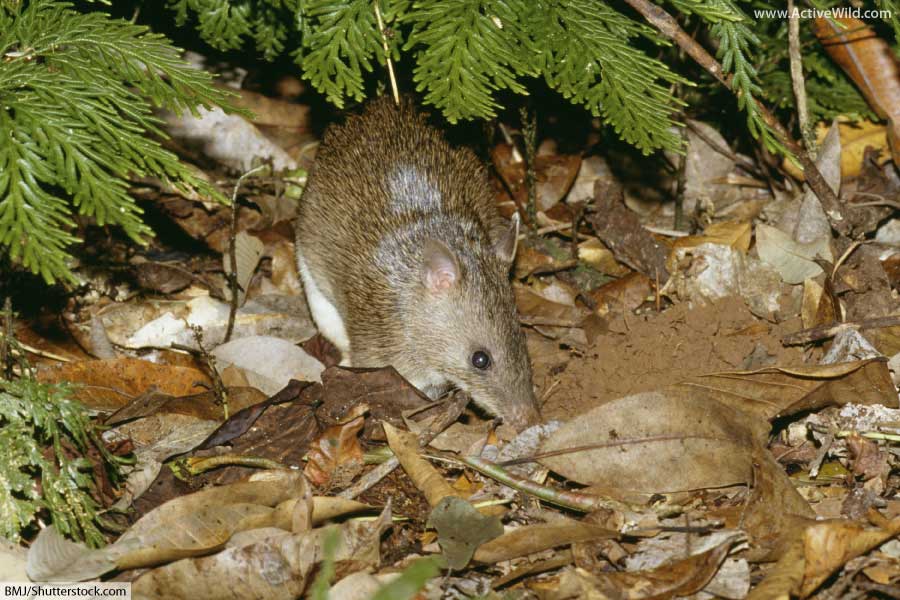

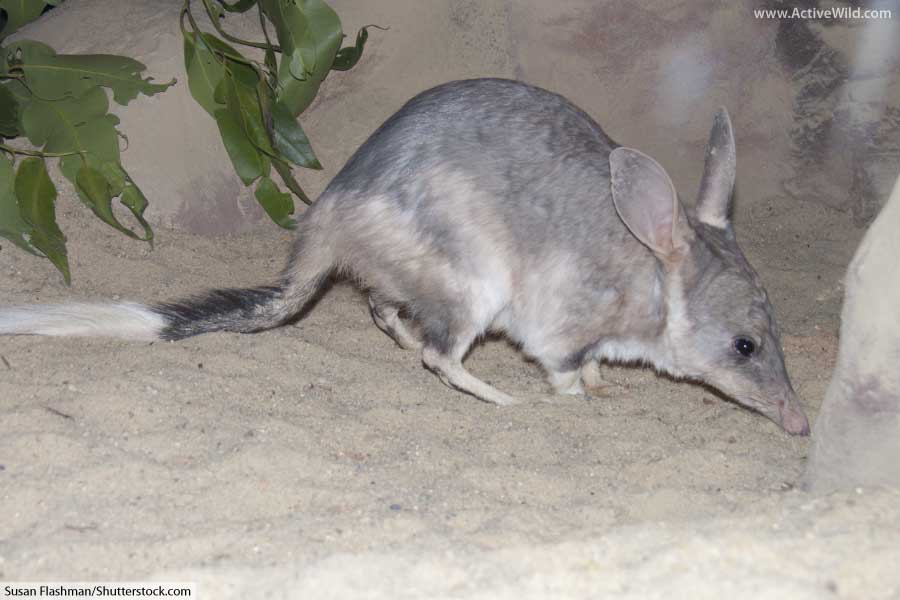
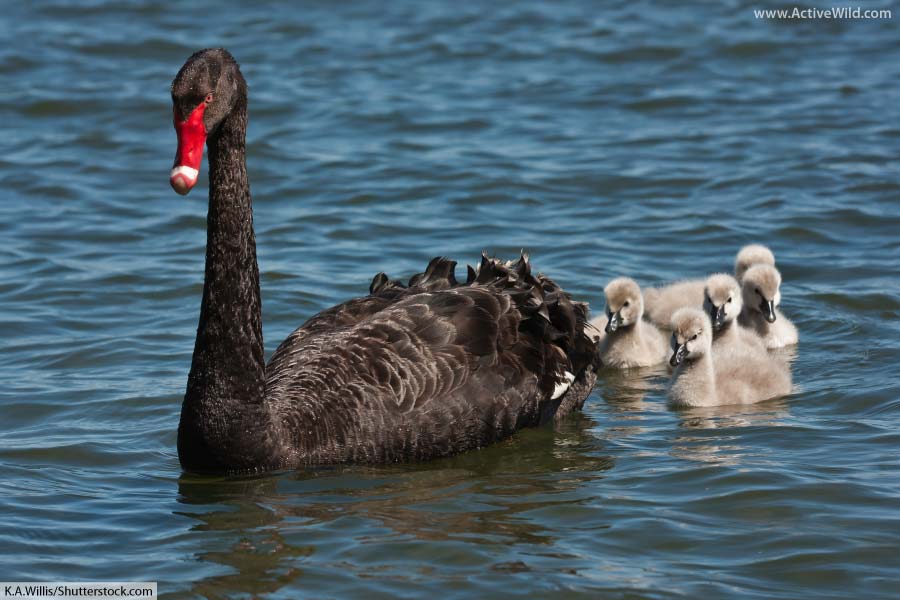
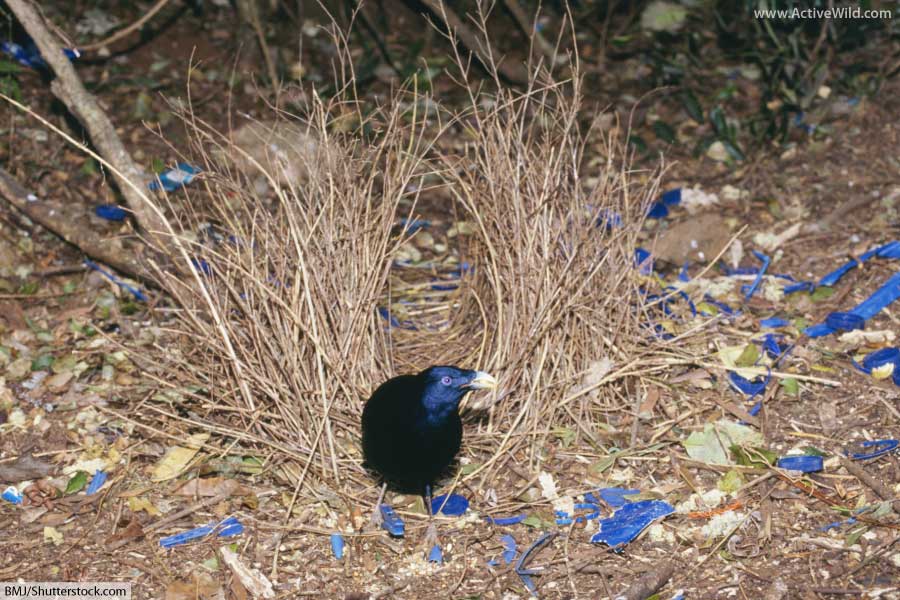


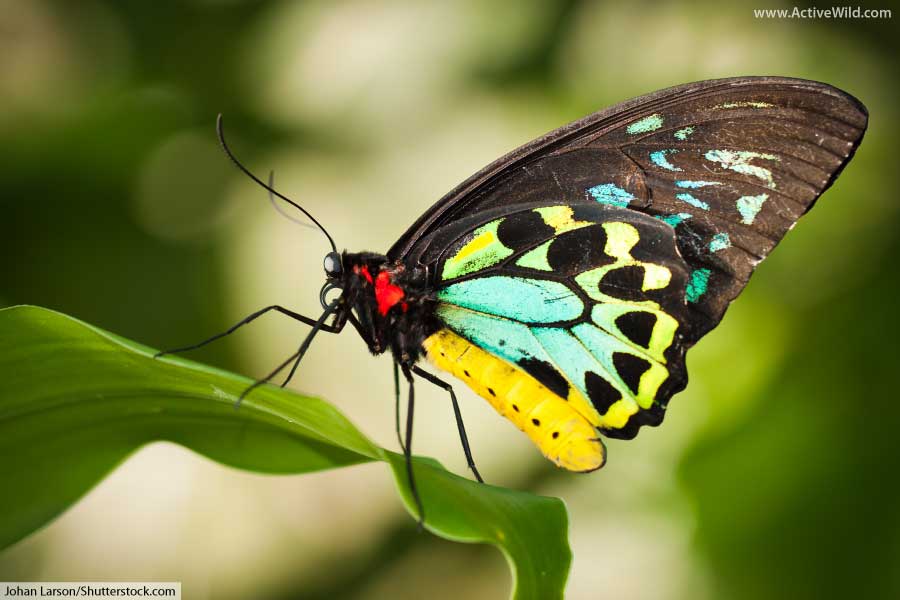

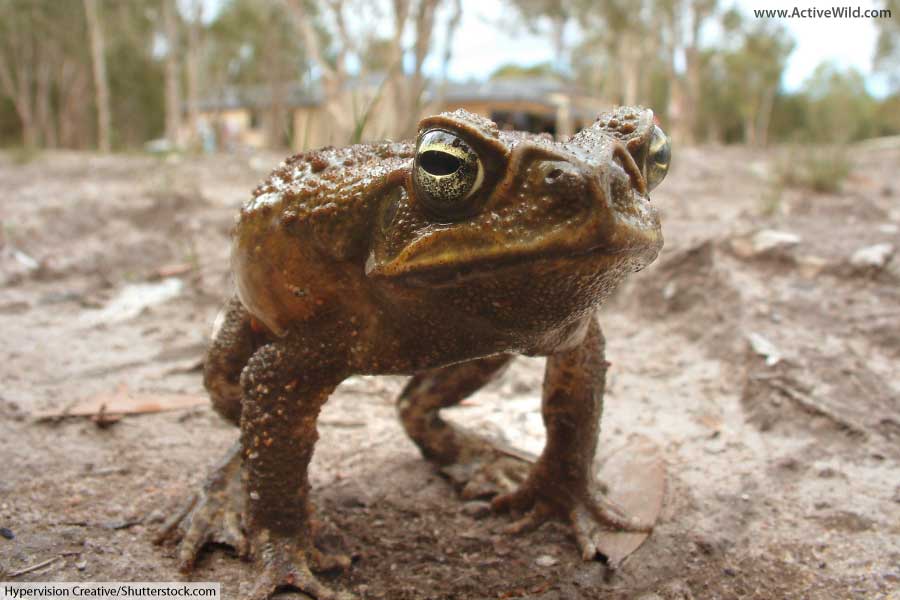
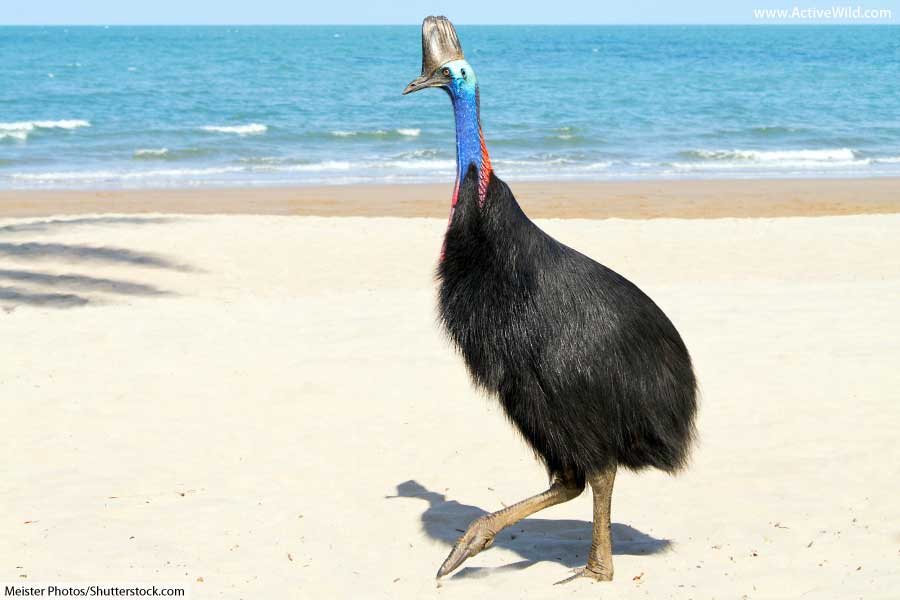
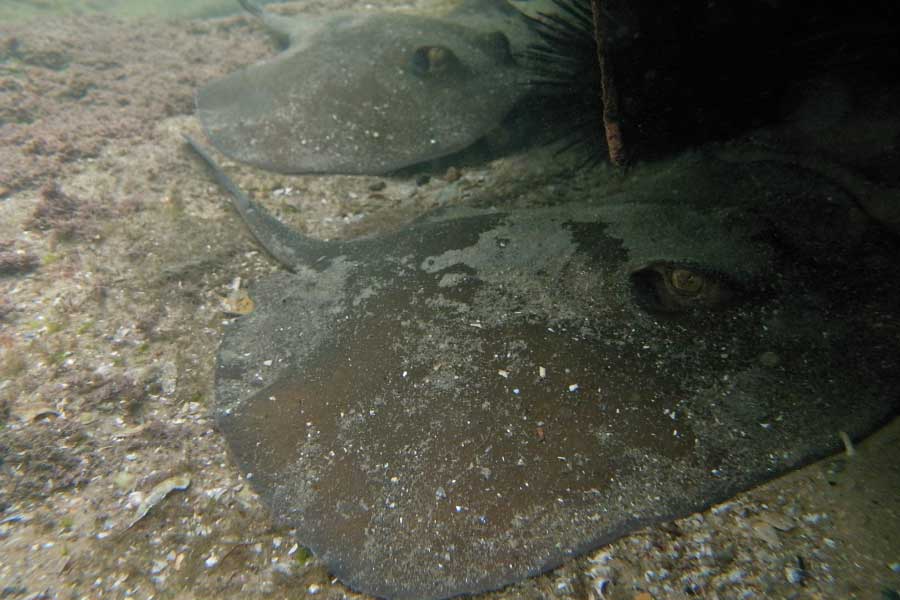
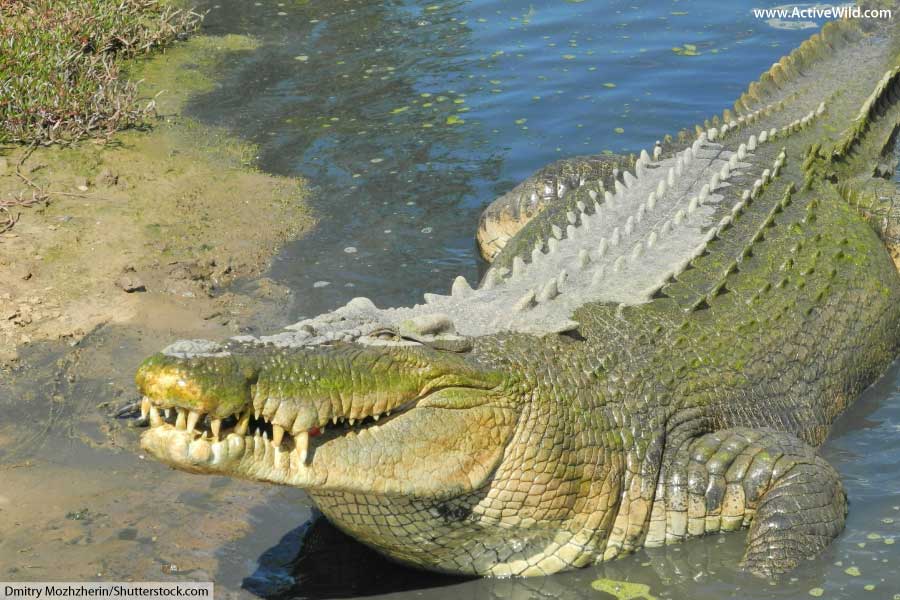
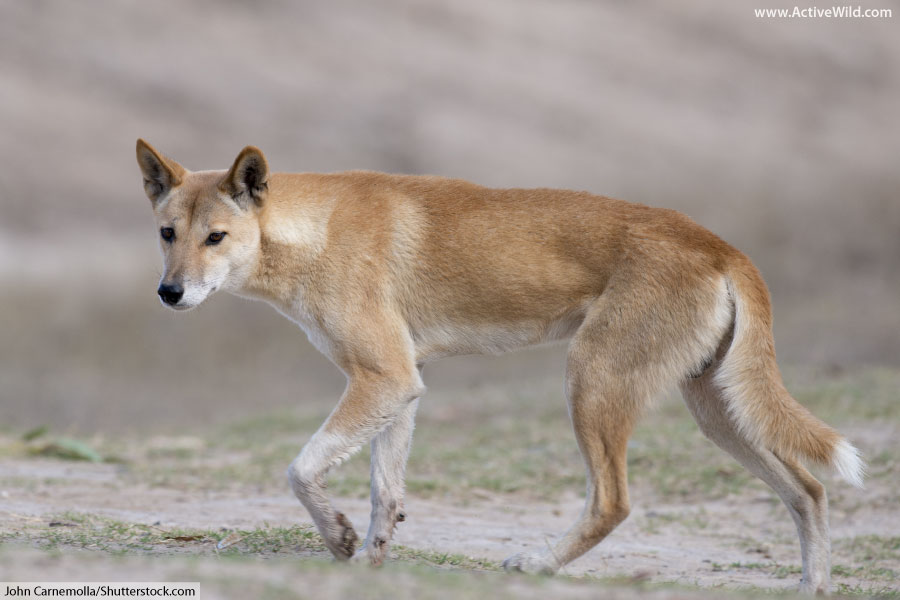

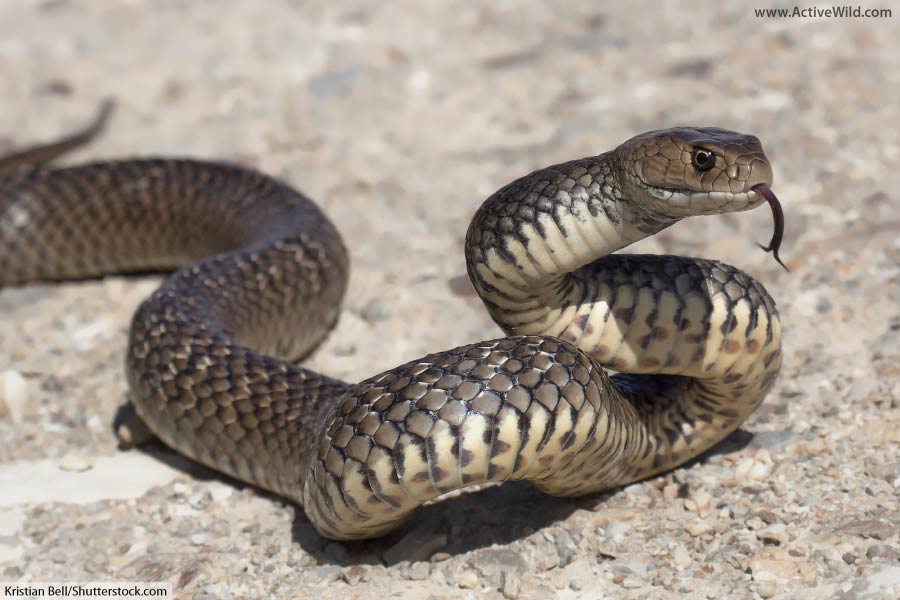
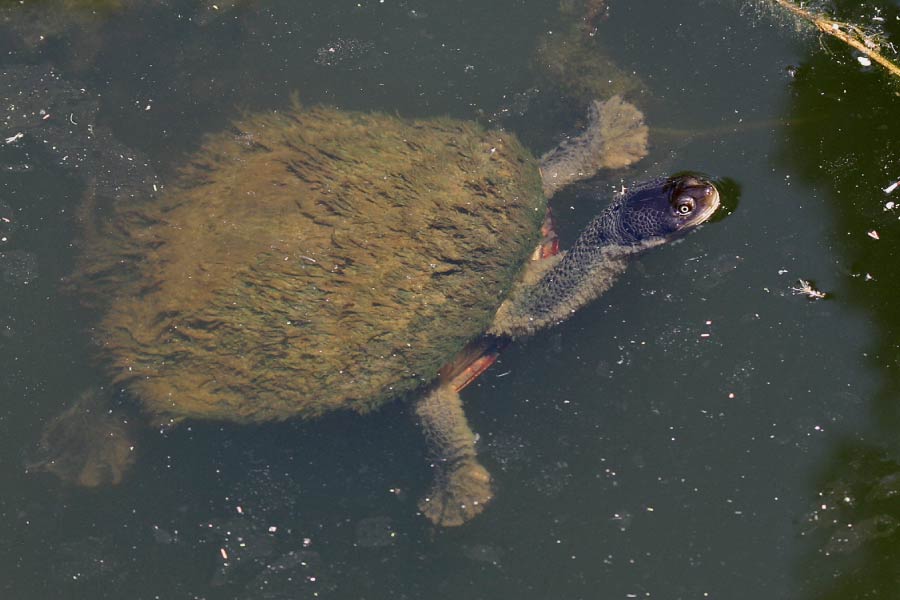
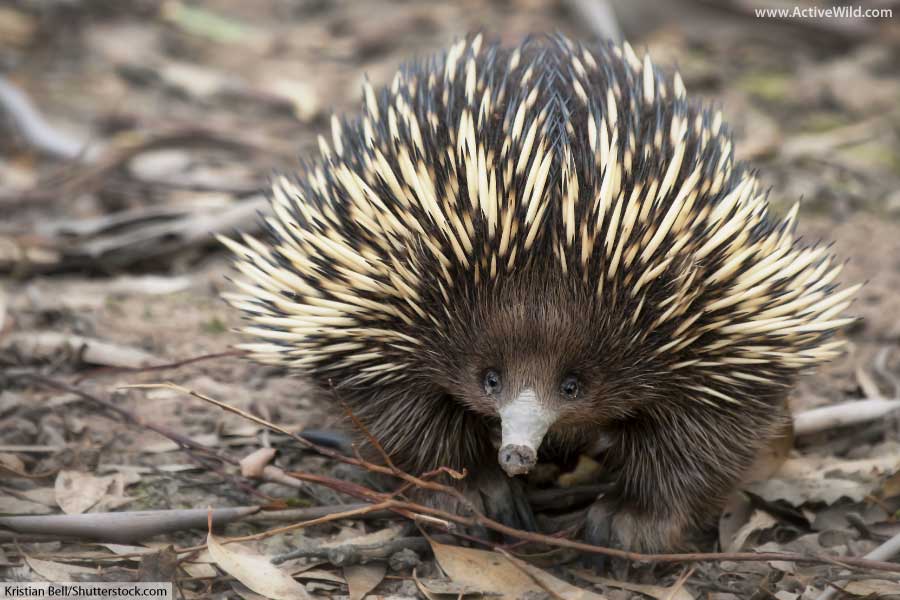
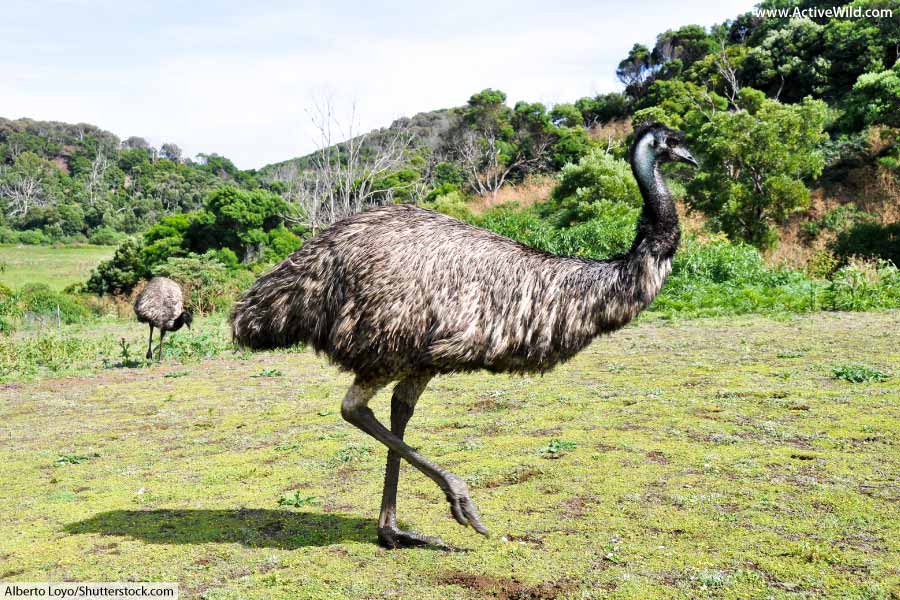
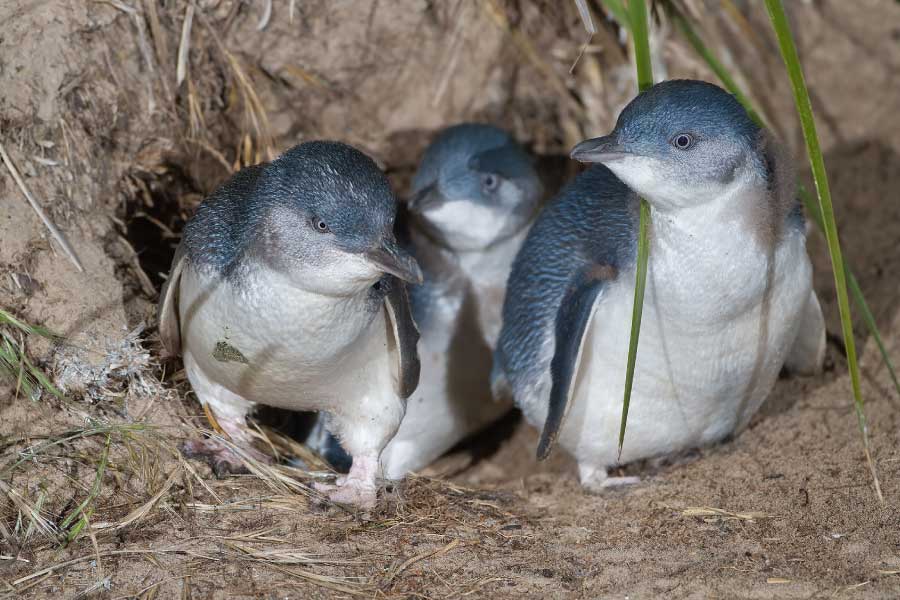

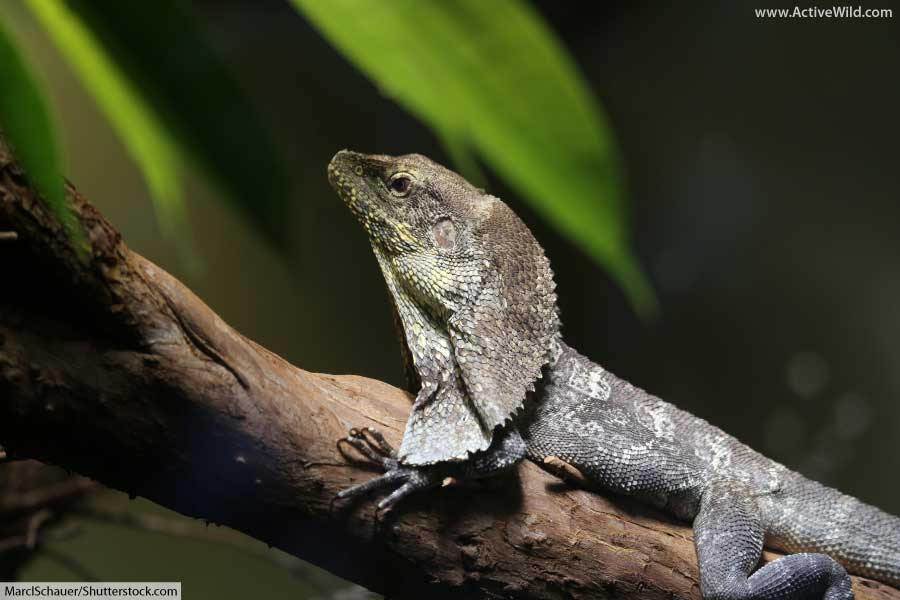
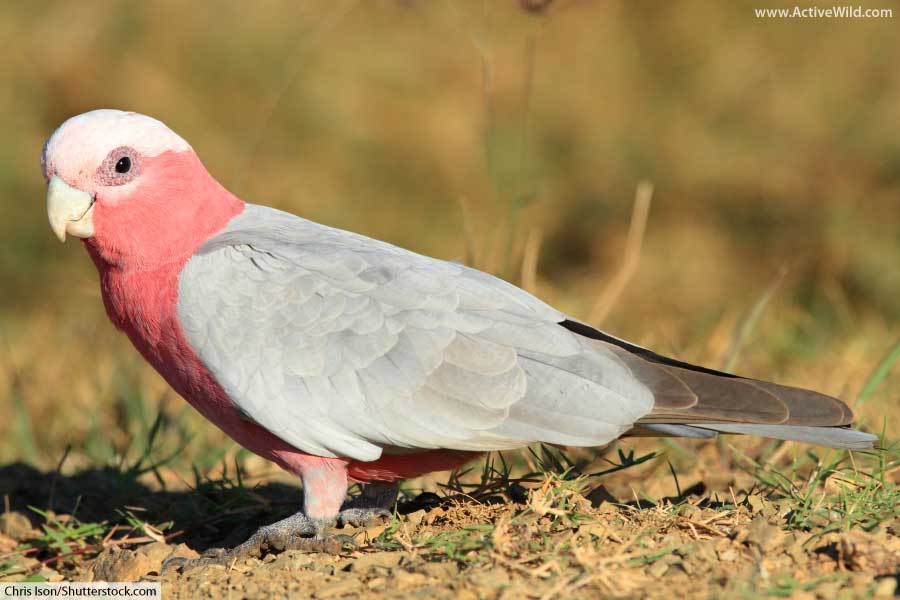

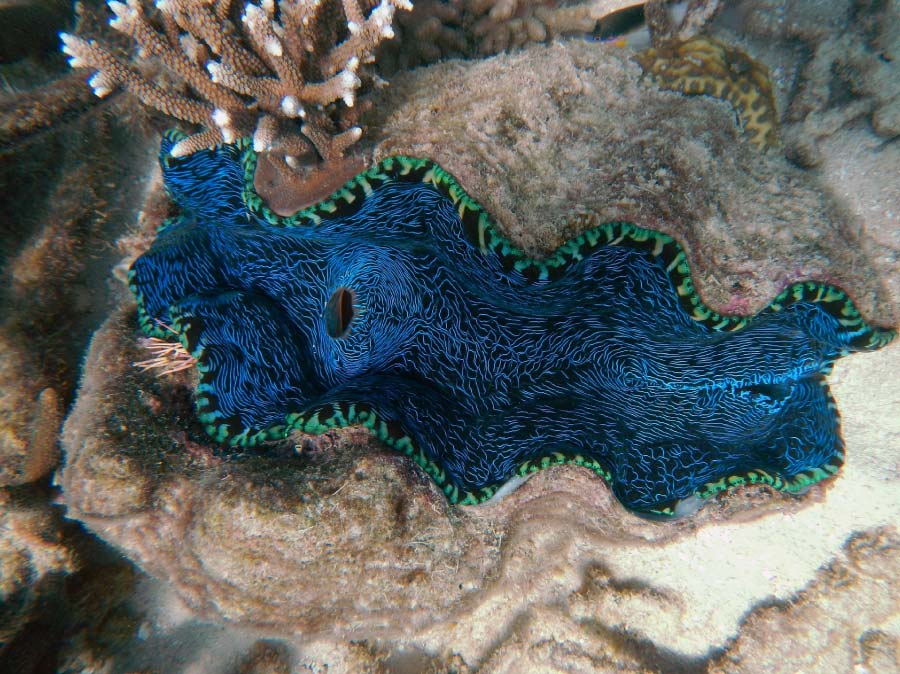
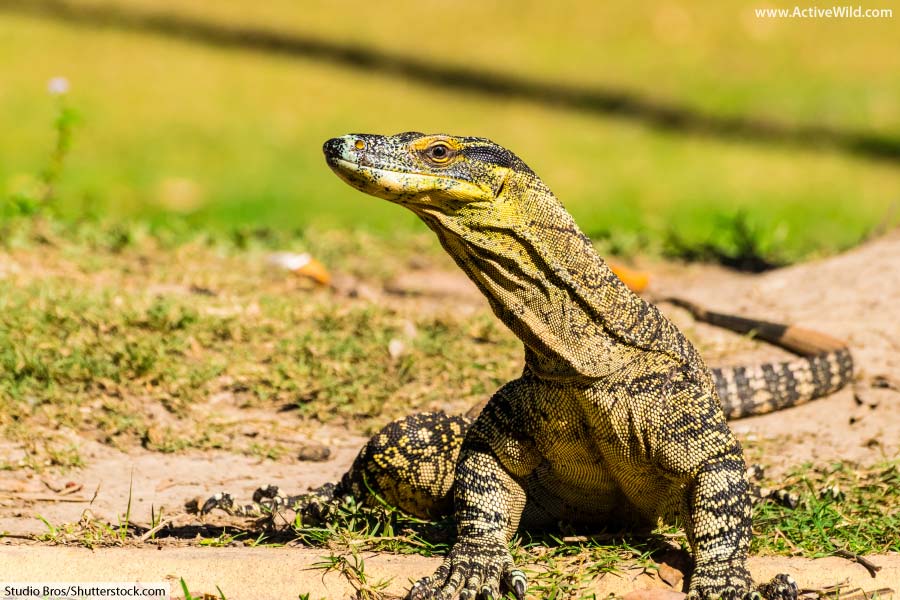
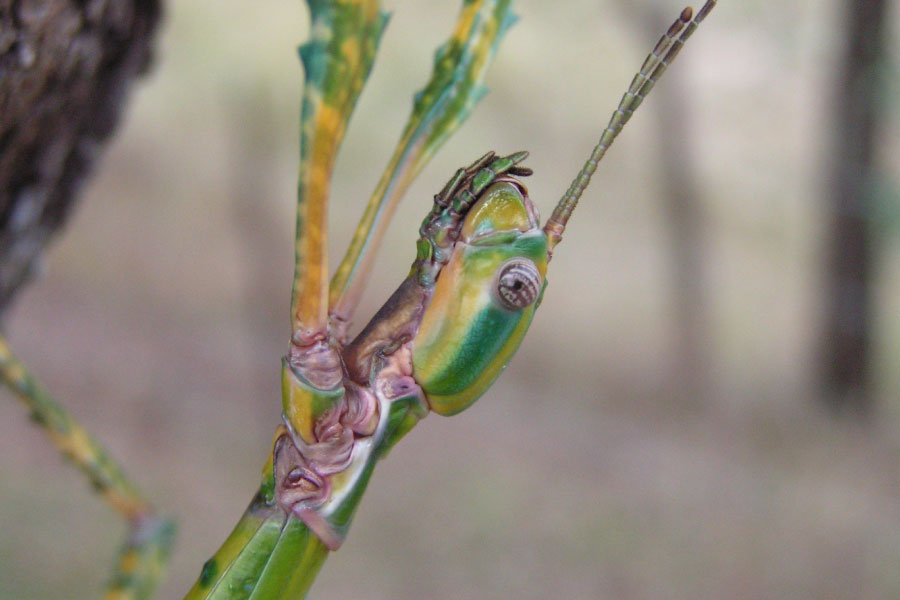
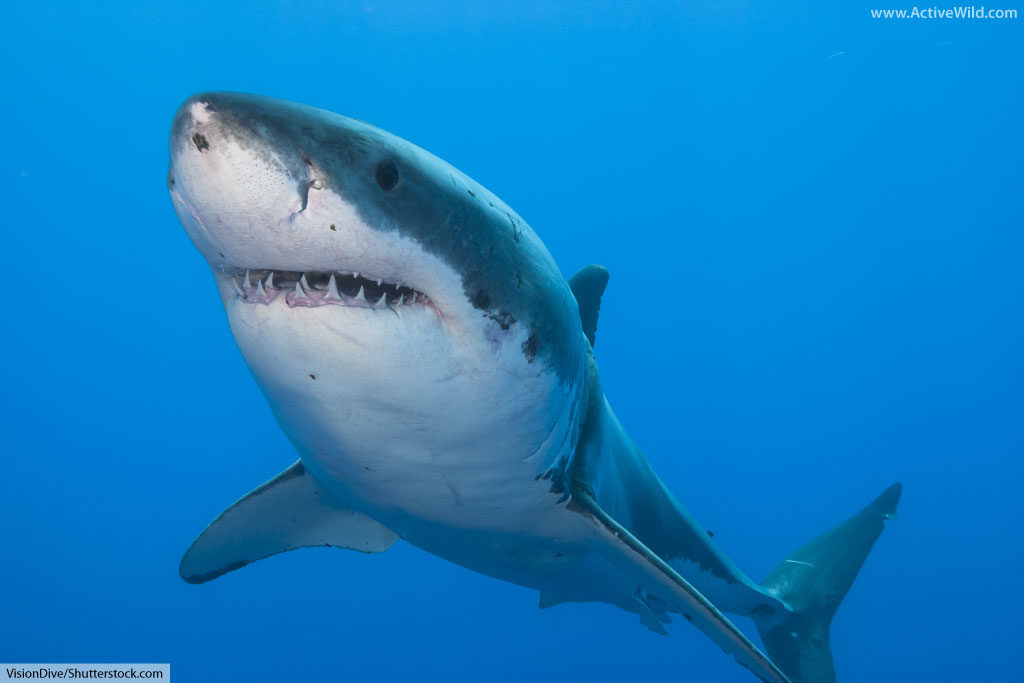

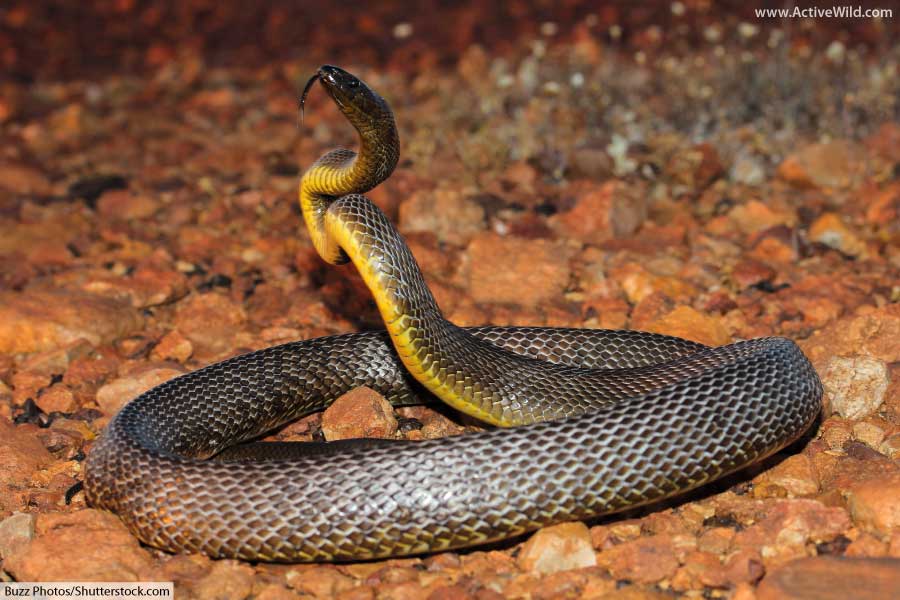



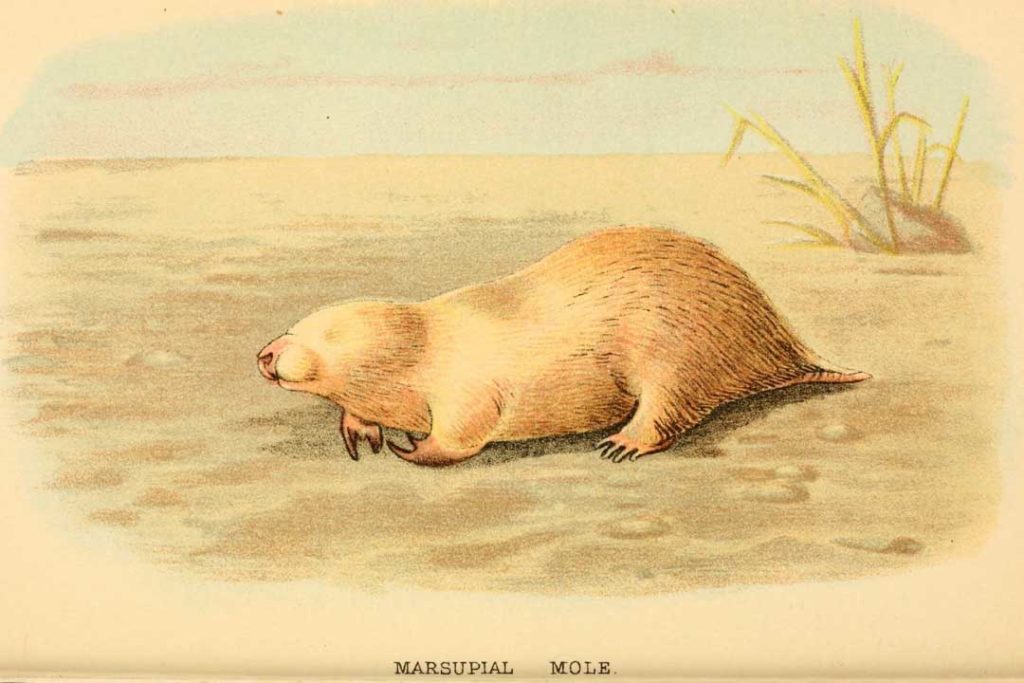
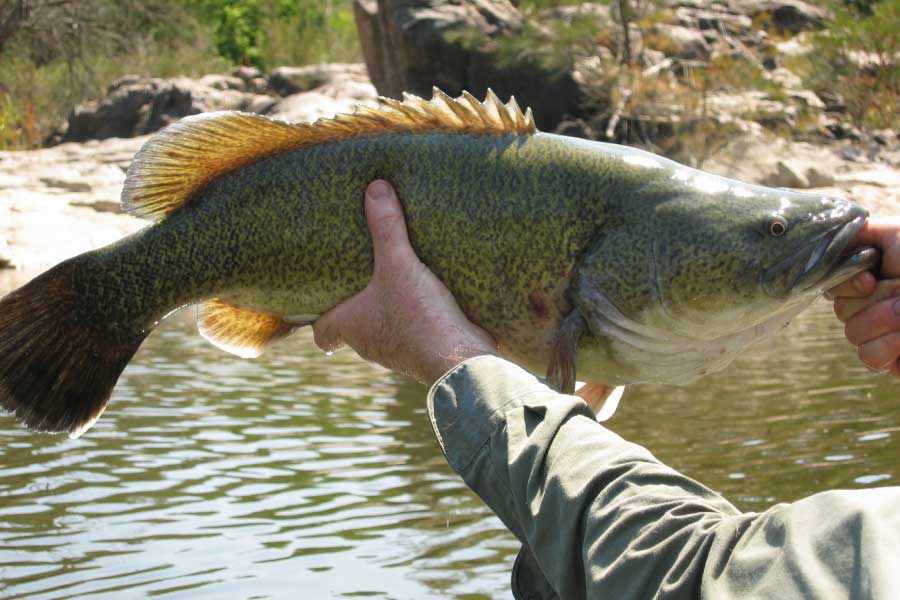
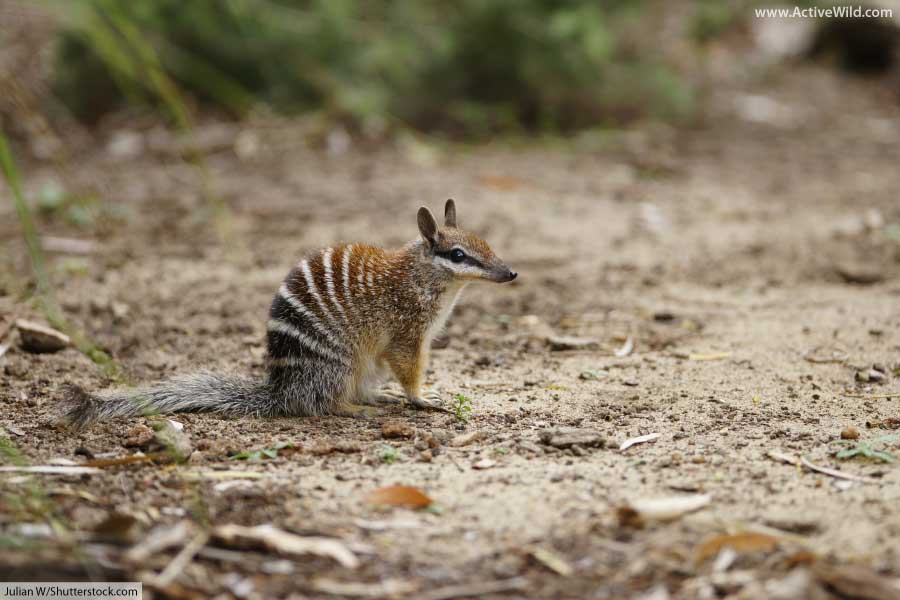


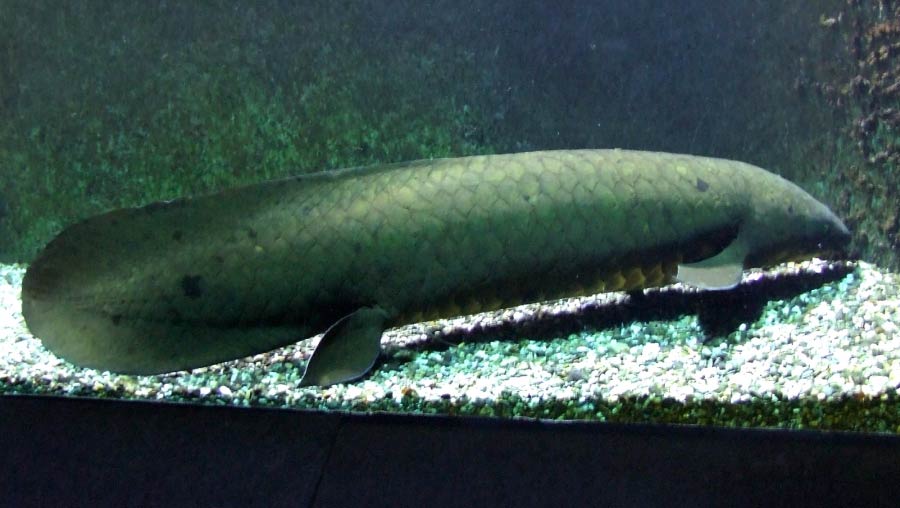
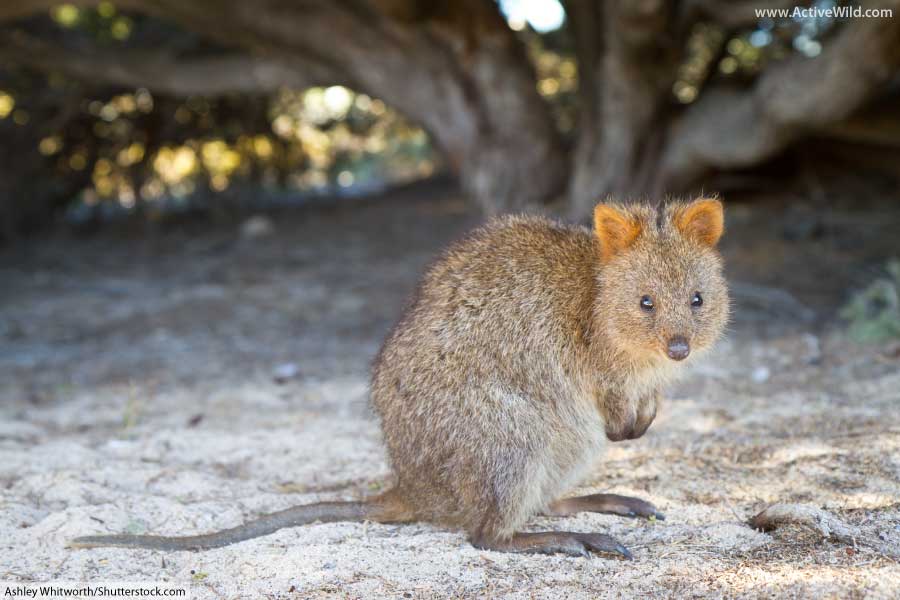
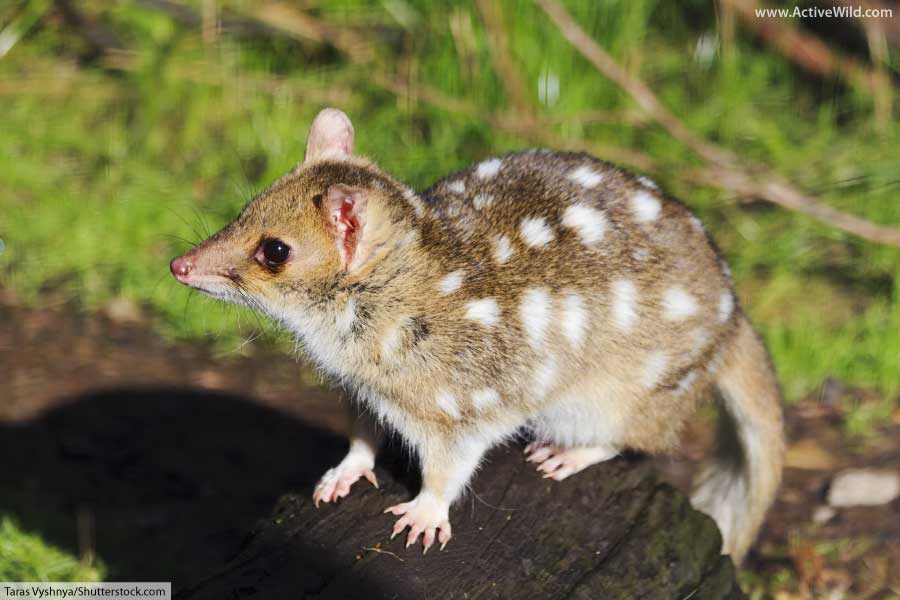
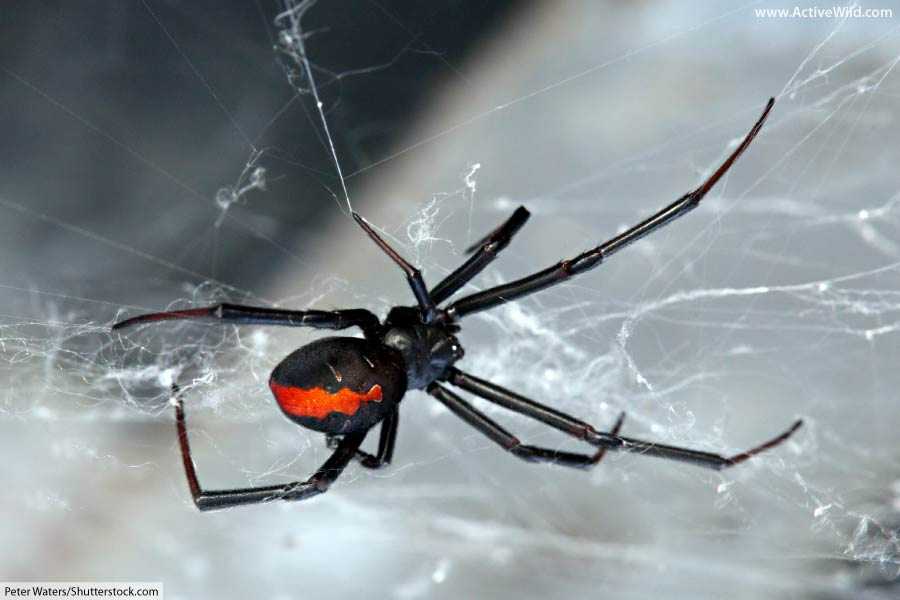
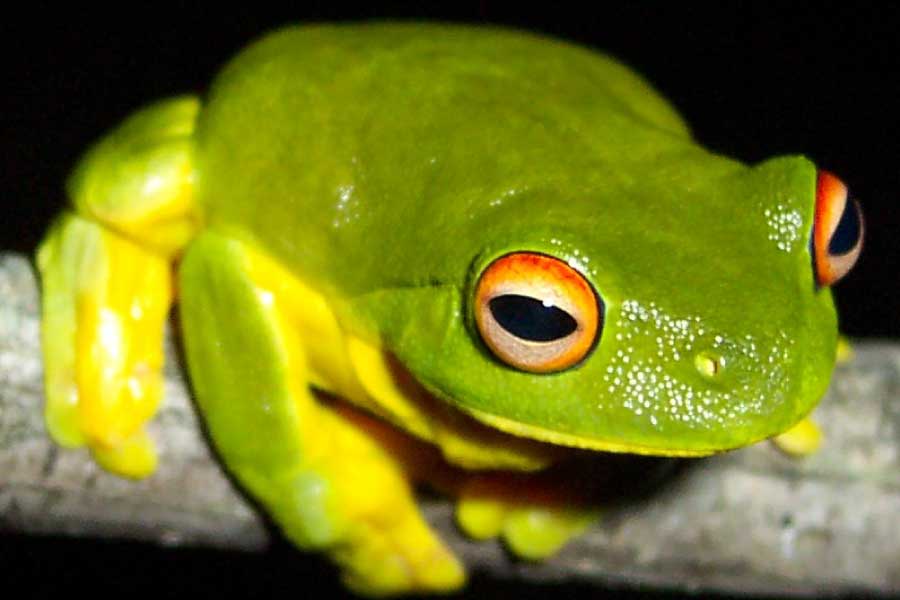


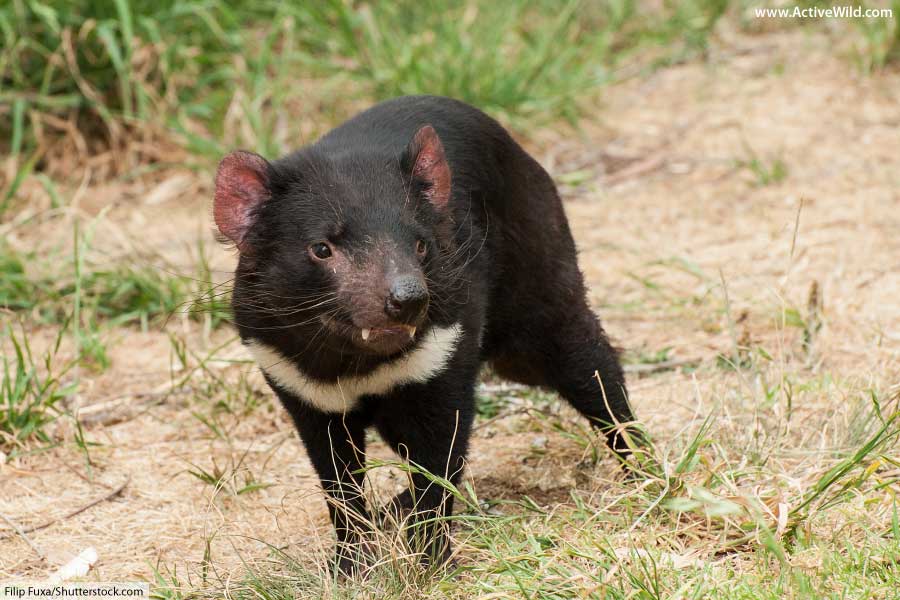
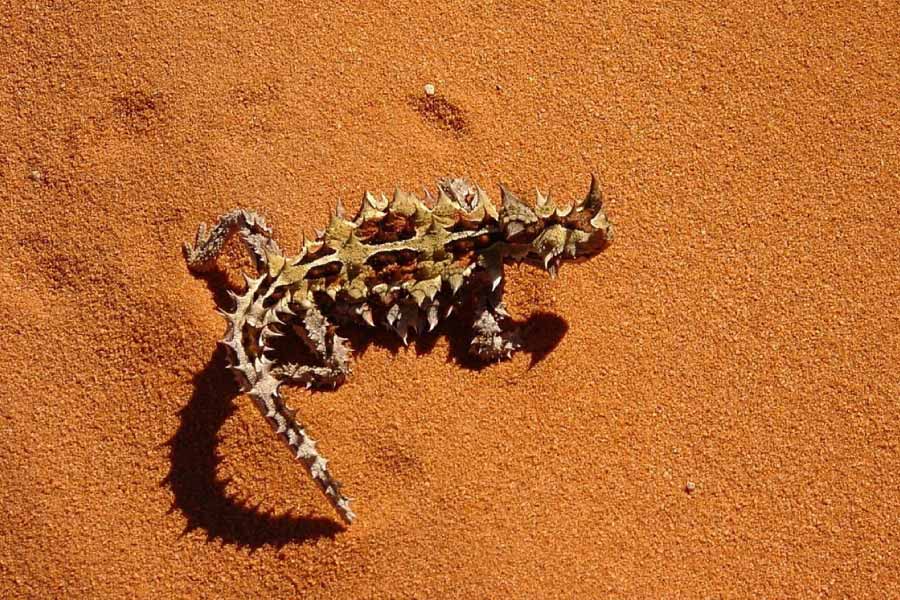
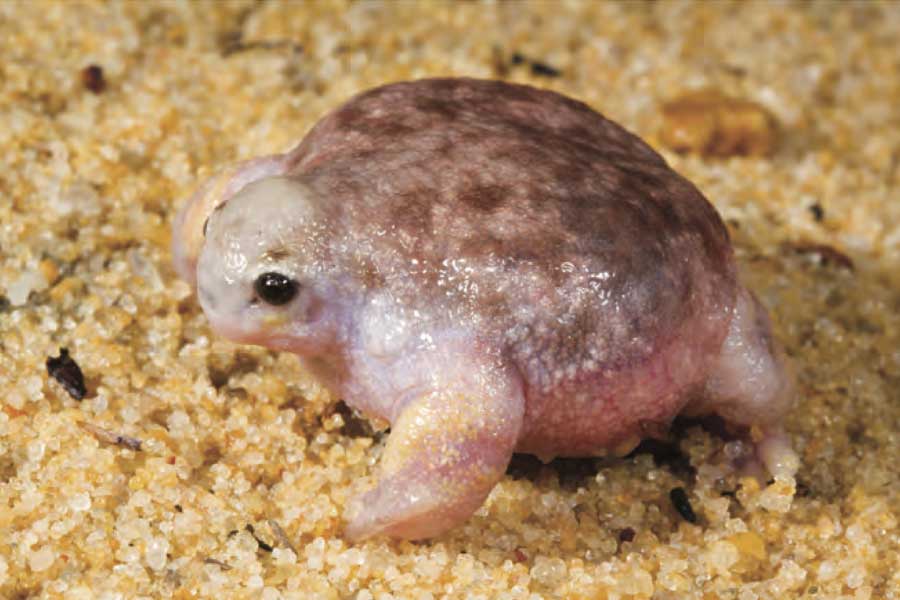
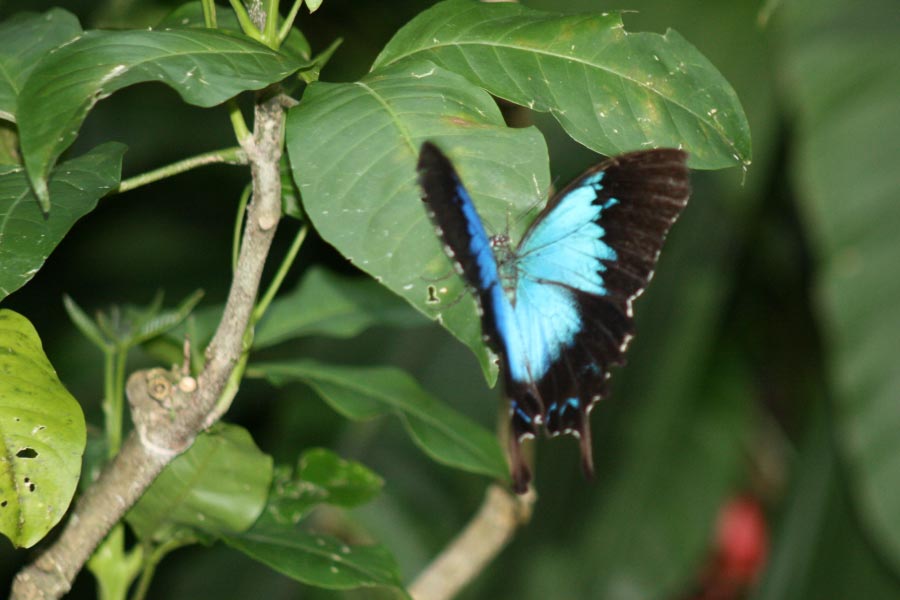
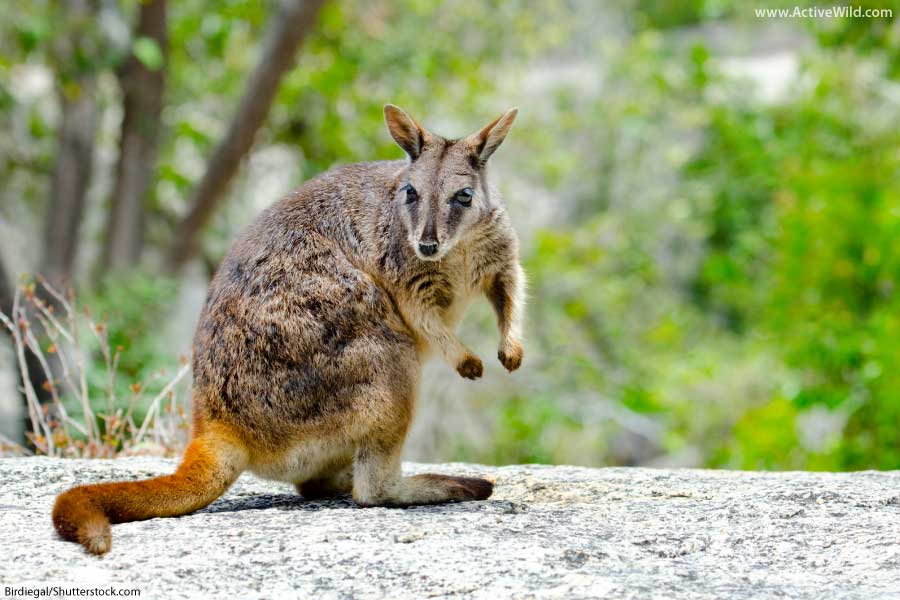
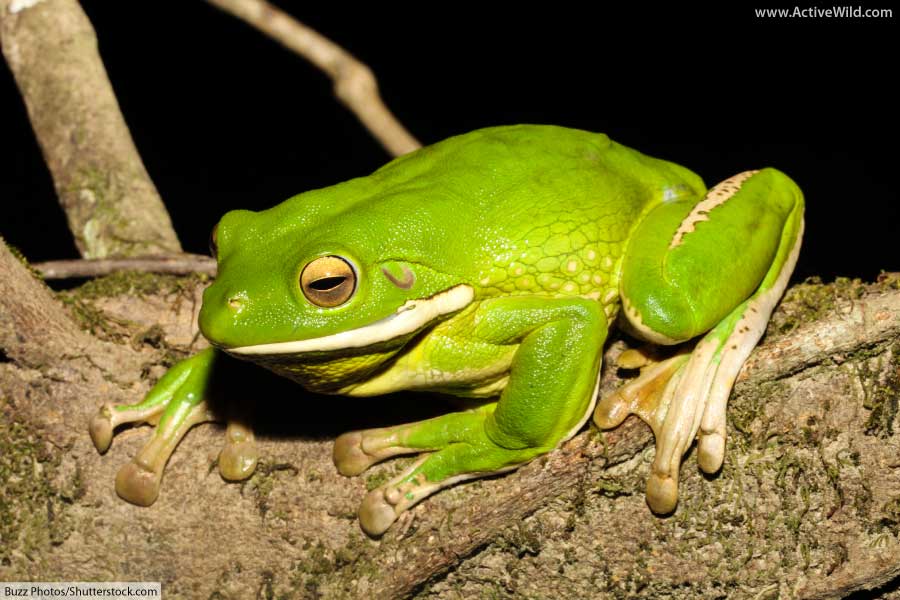
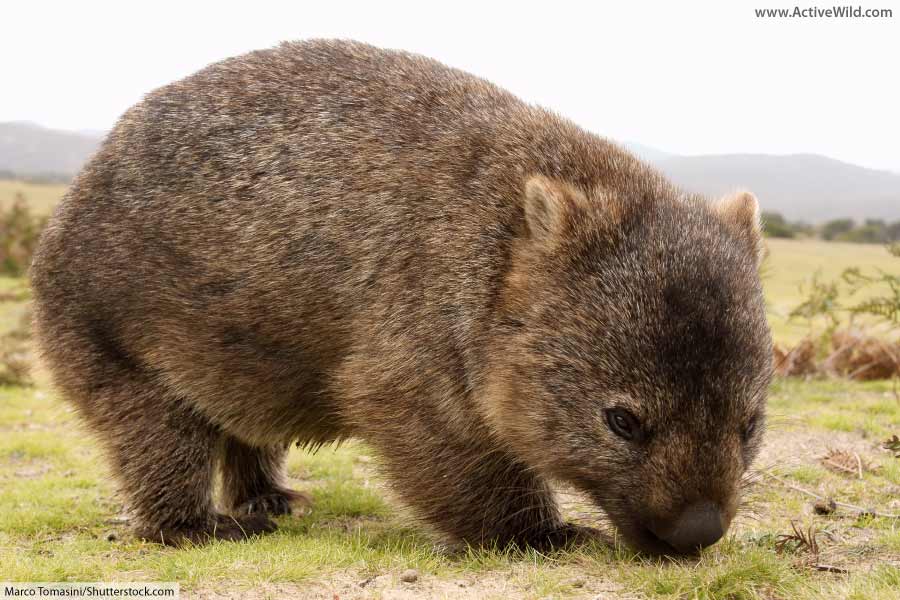


Great list! 🙂
its sad a lot of animals are in danger 🙁
I hope that none of the animals go extinct. It would be really sad if they did. Some people would not get to see what amazing animals they are.
I really hope the dingo doesn’t go endangered. I know some animals went endagered and then went extinct ): like the tasmanian tiger/tasmanian wolf or the Paradise parrot (Psephotus pulcherrimus). I really hope the don’t go since i really love dingos):
how is the australian sea lion endangered
Good question. The species was heavily hunted in the 19th Century, and today its population is fragmented. You can find out more on this page: Australian Sea Lion Facts.
I have to write something for school, so I picked an animal. Thx website. :>
I <3 turtle frog!
i do not want the tasmanian devil to go endanger please try to save them.
In the picture of the Tarbosaurus there where two dinasours, are they both Tarbosaurus
thanks for information about animals in Australia
please send for me new information about animals